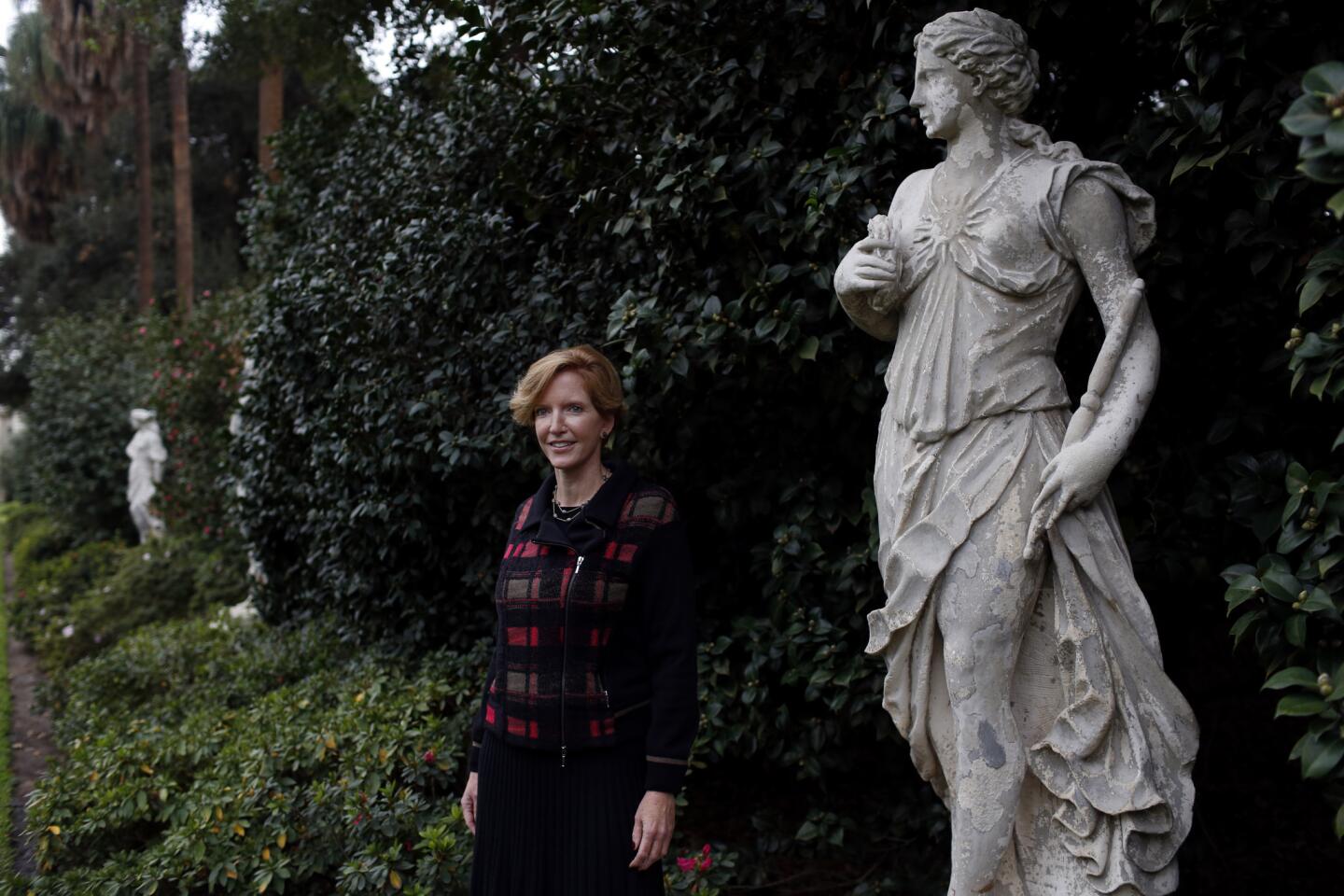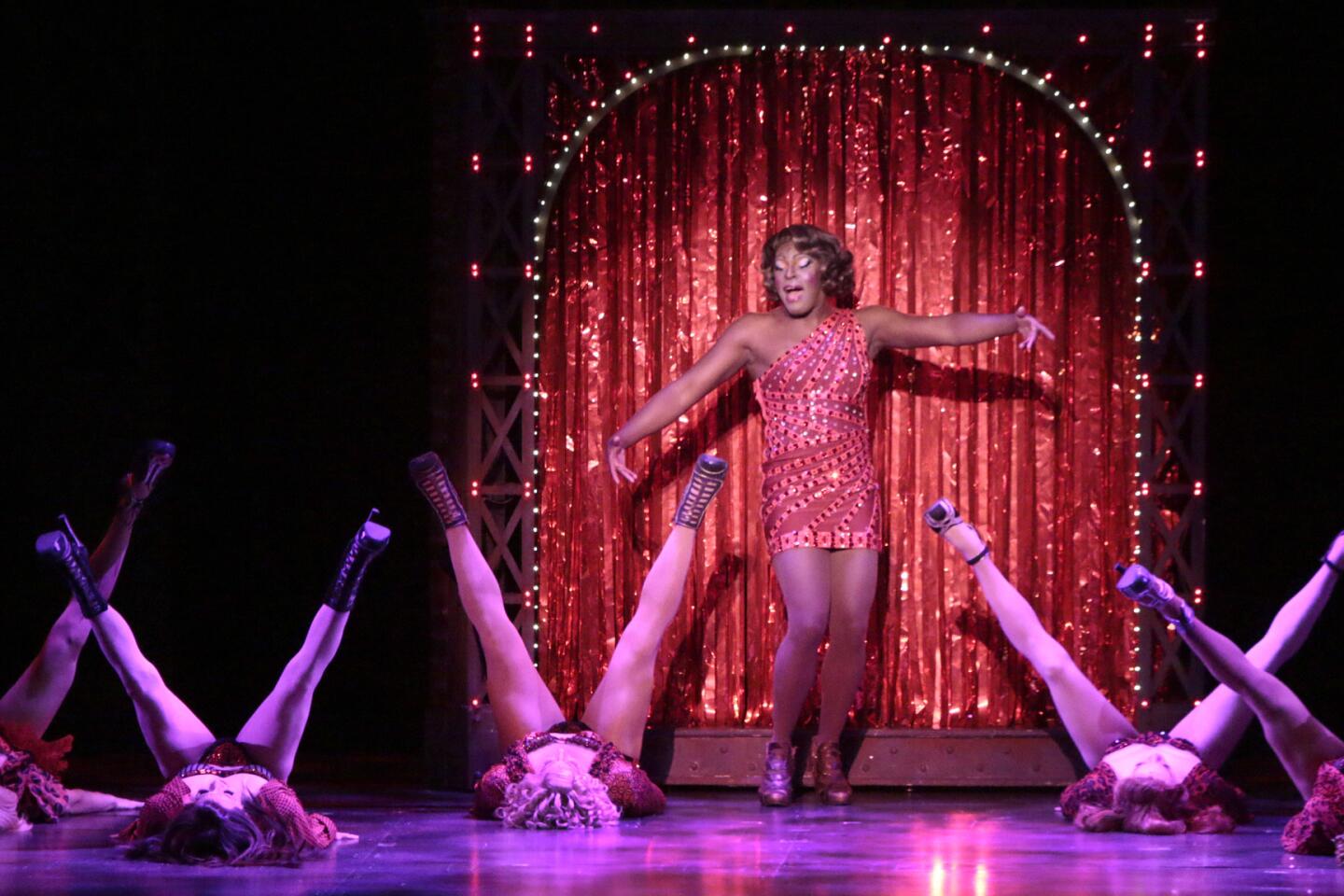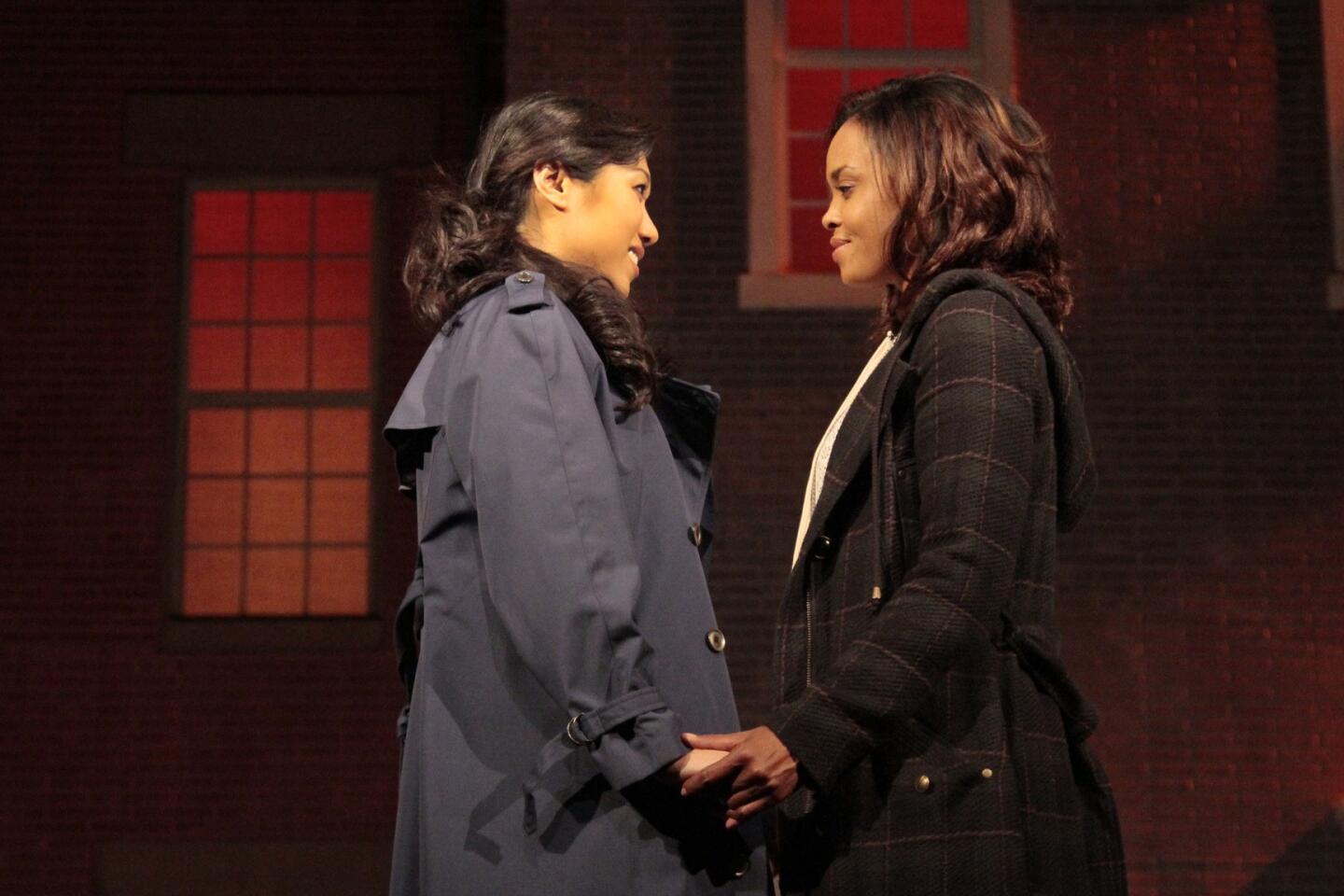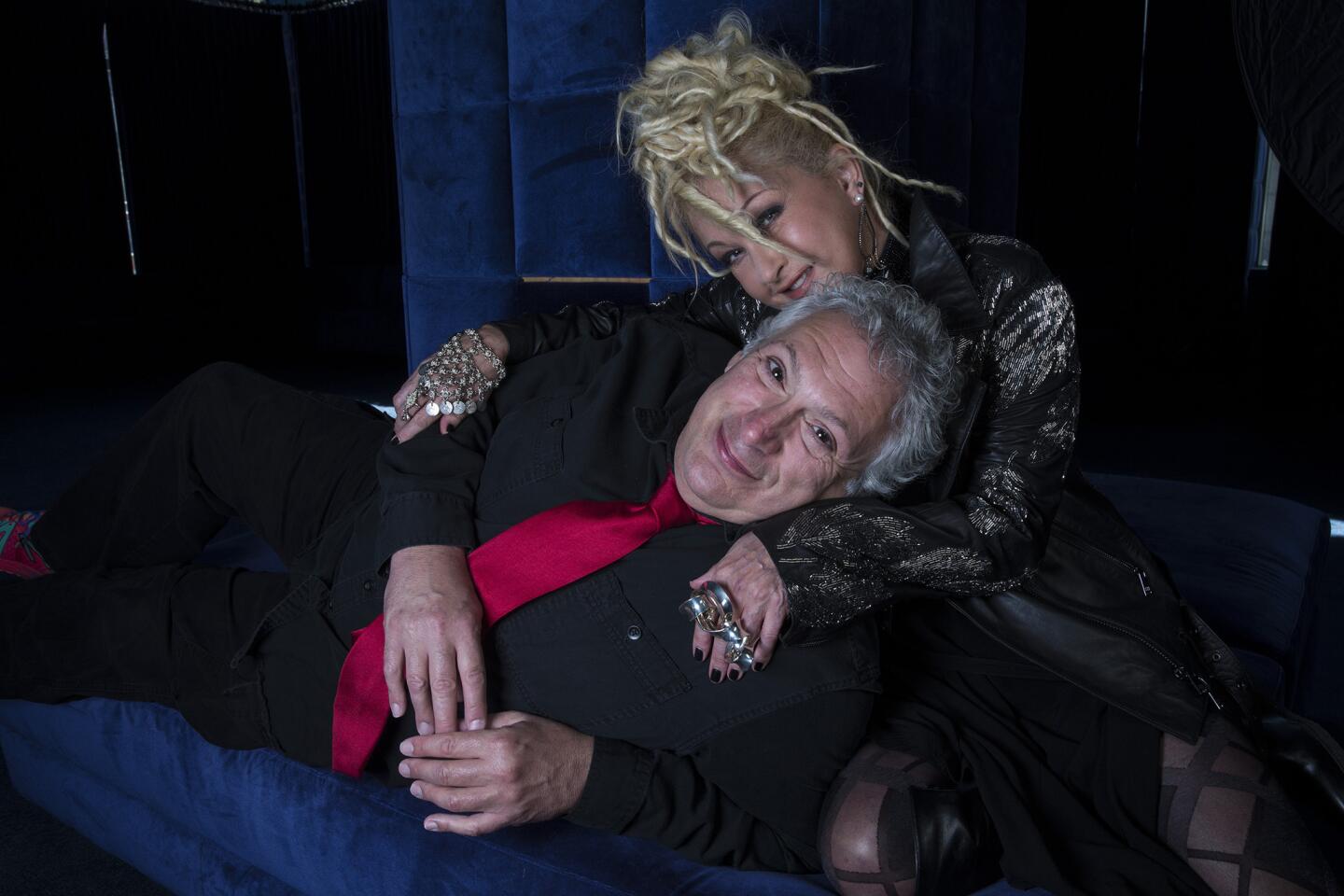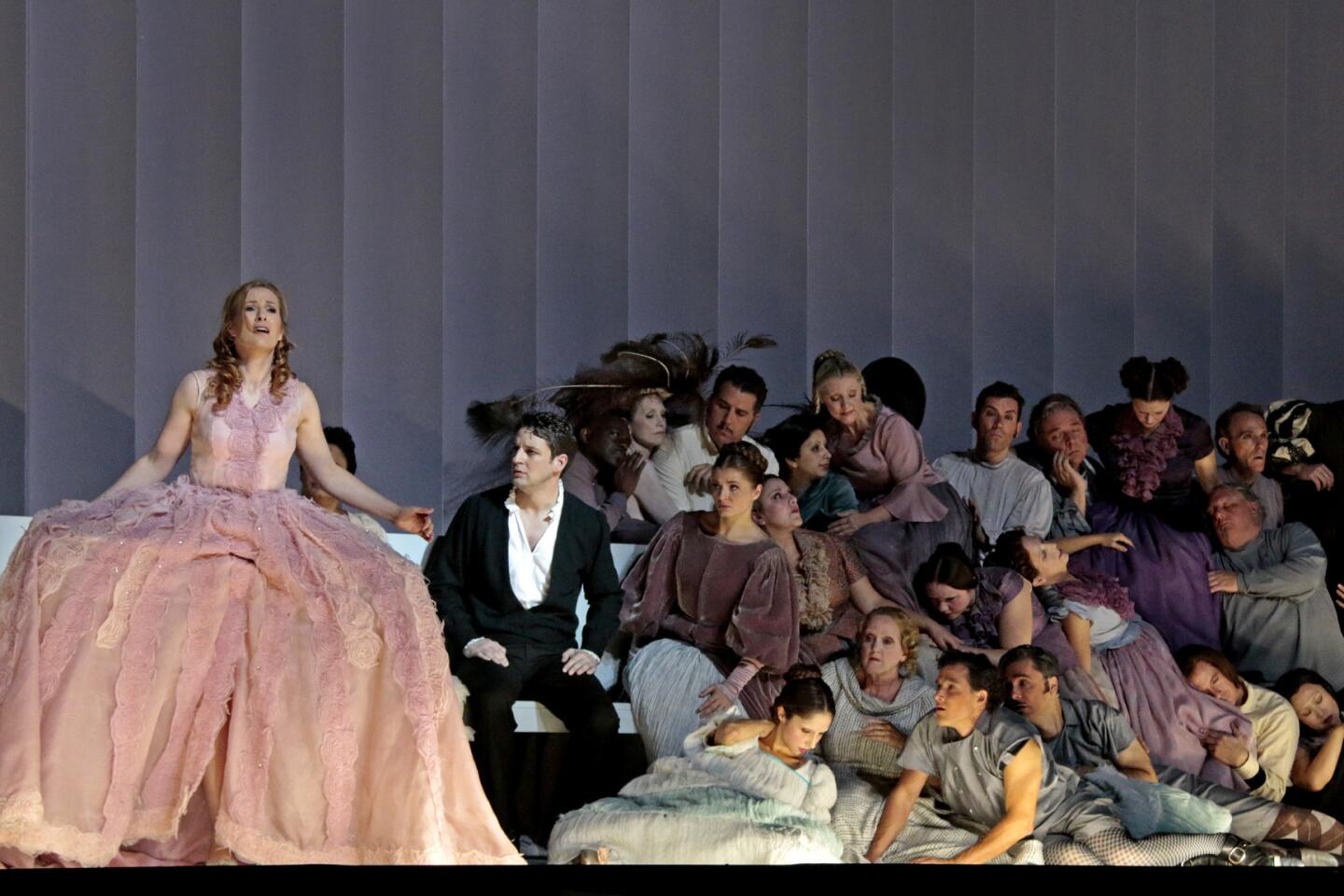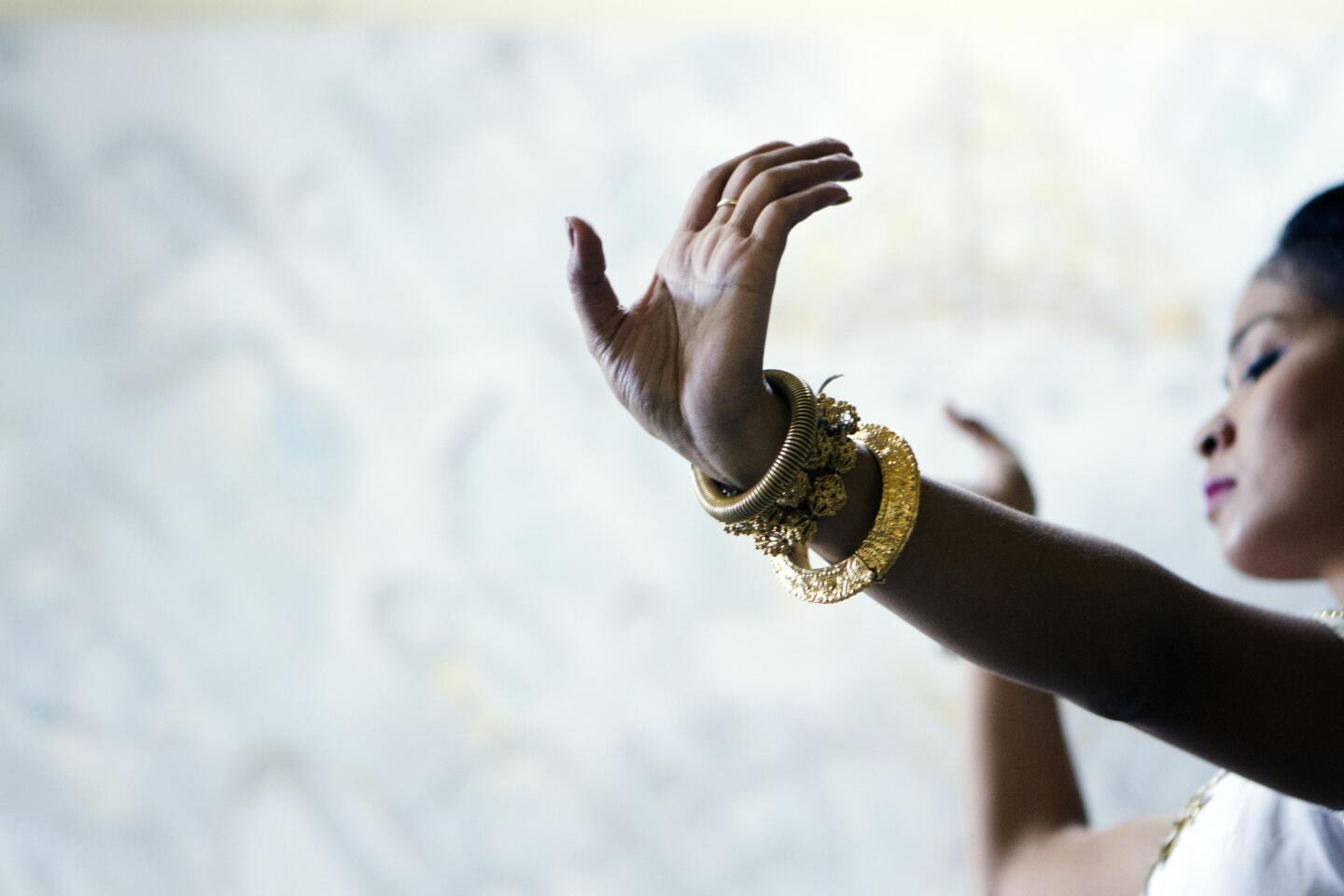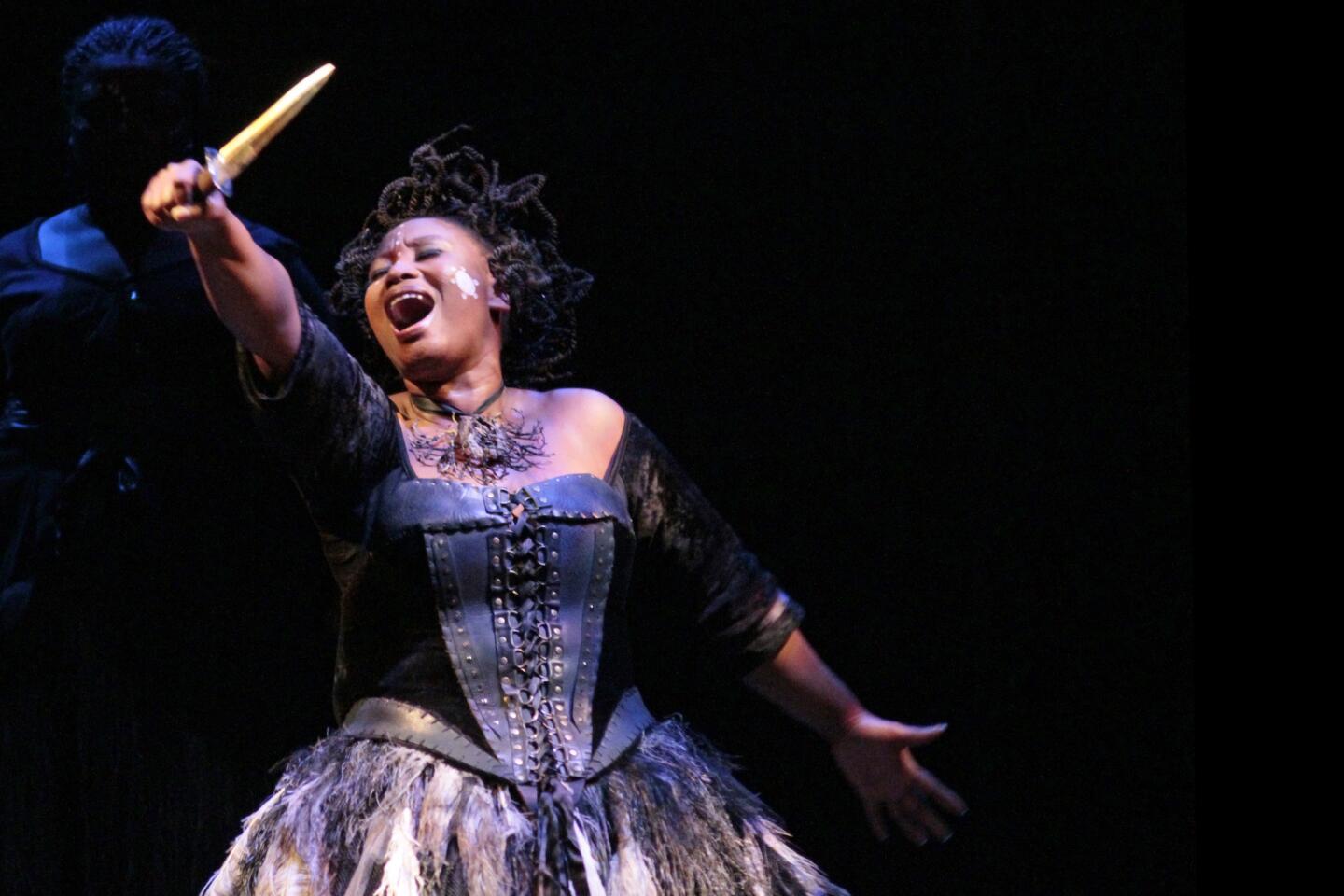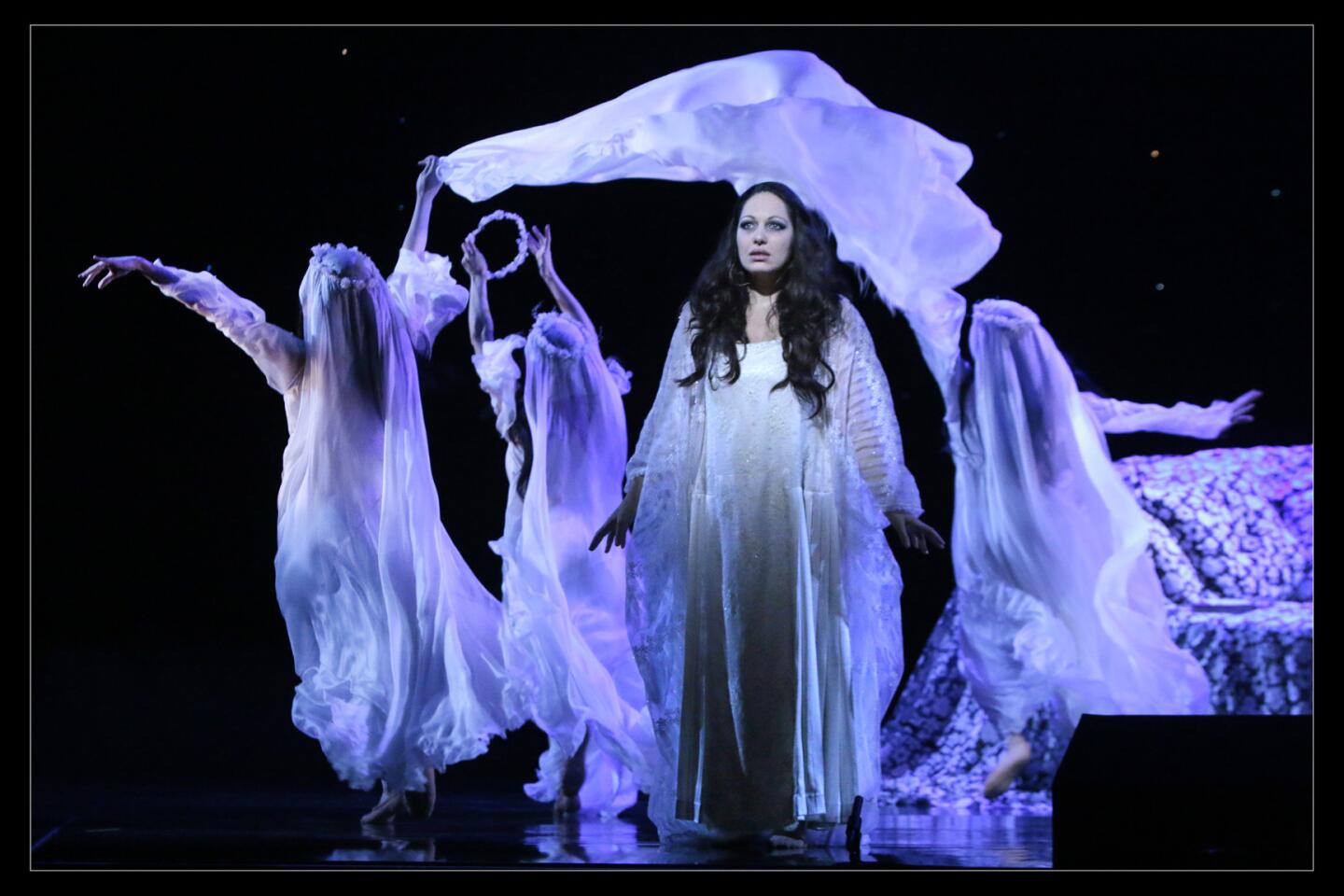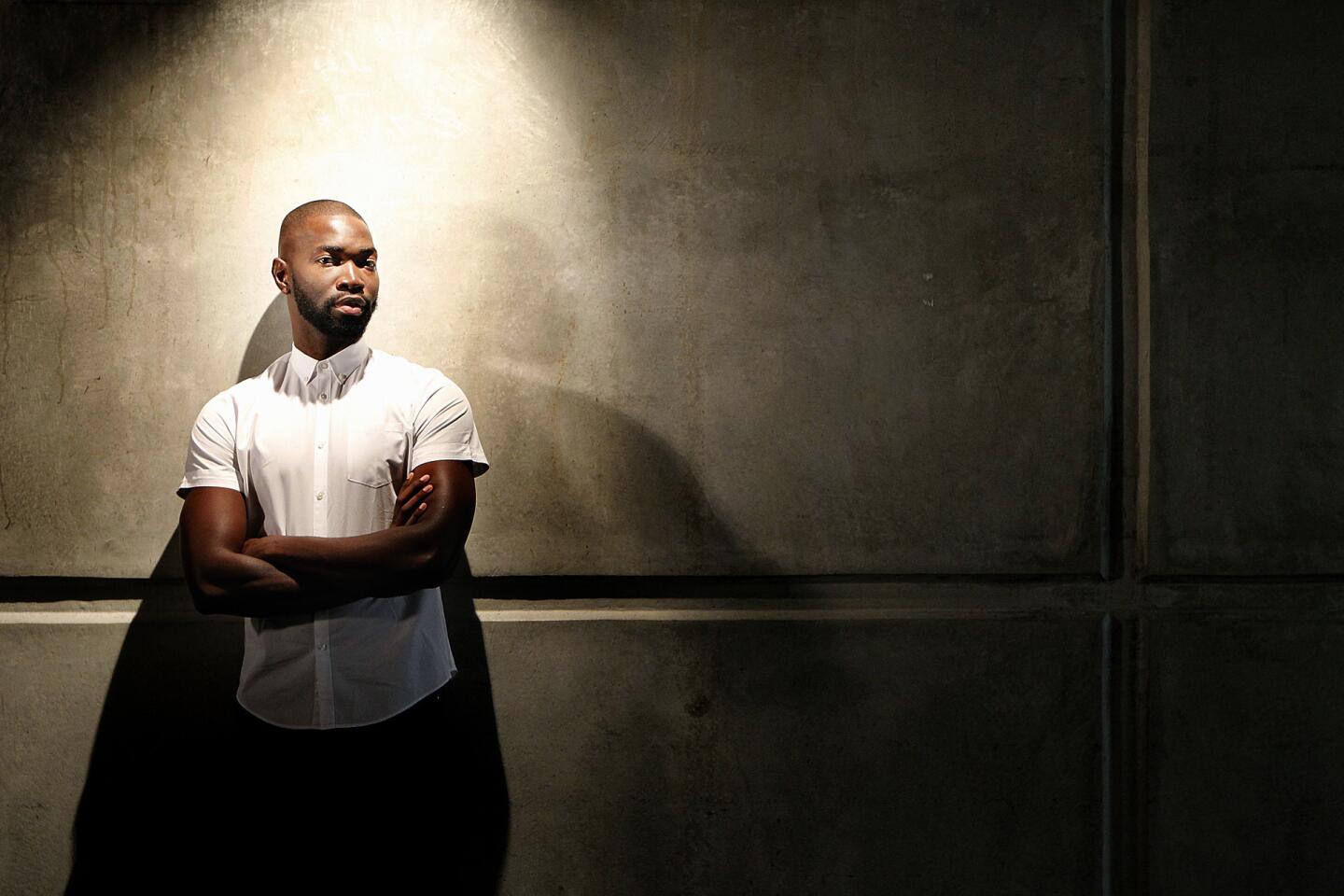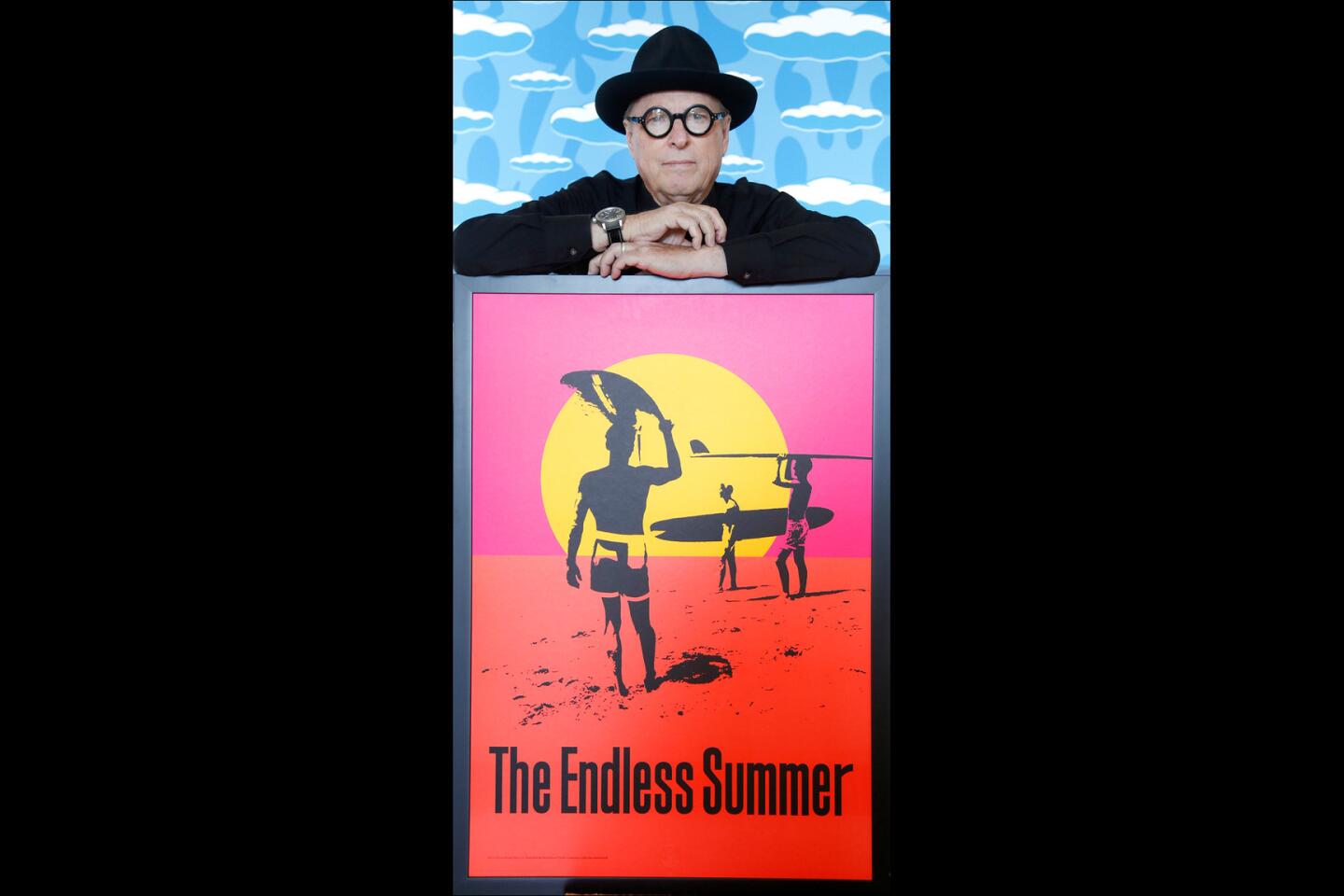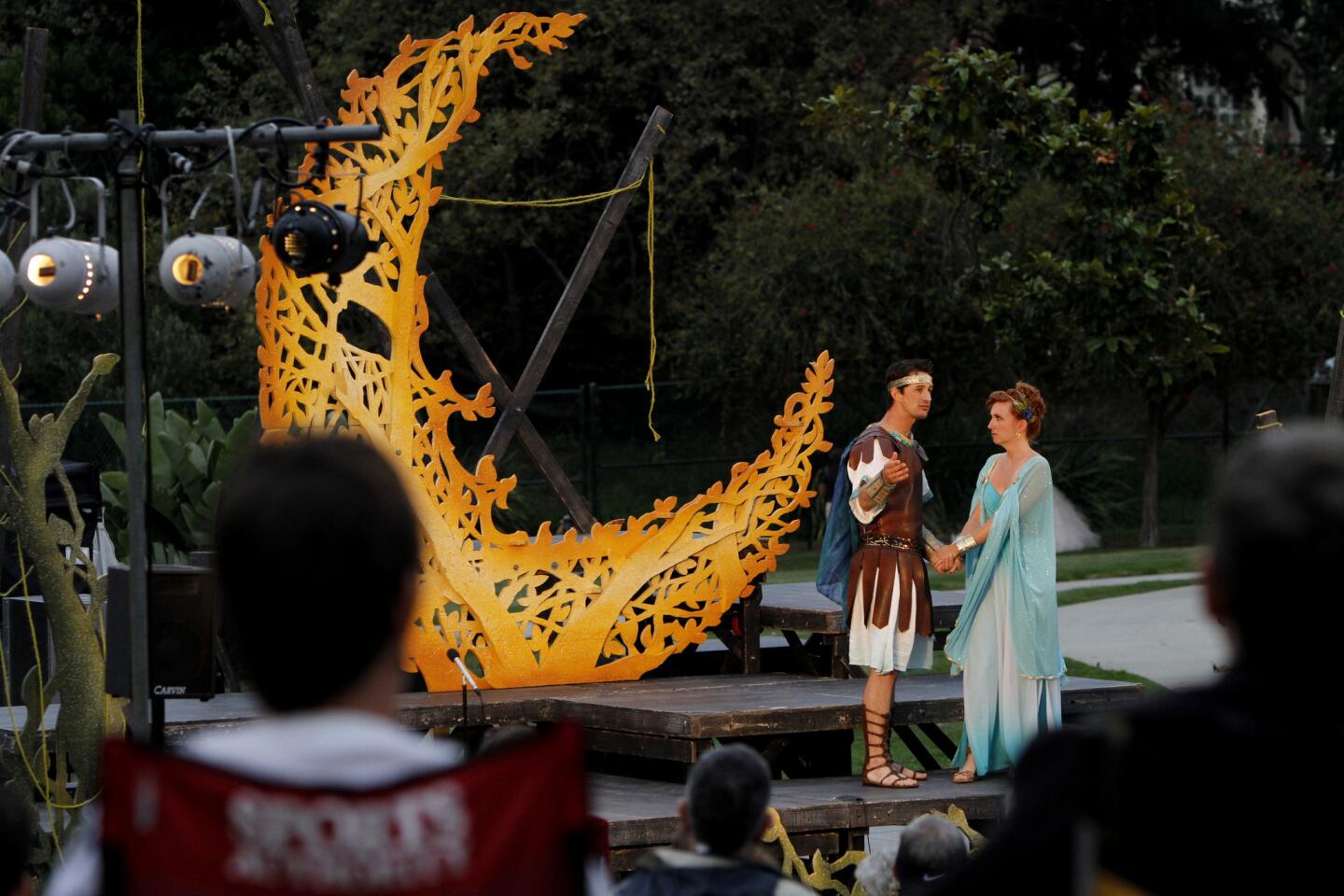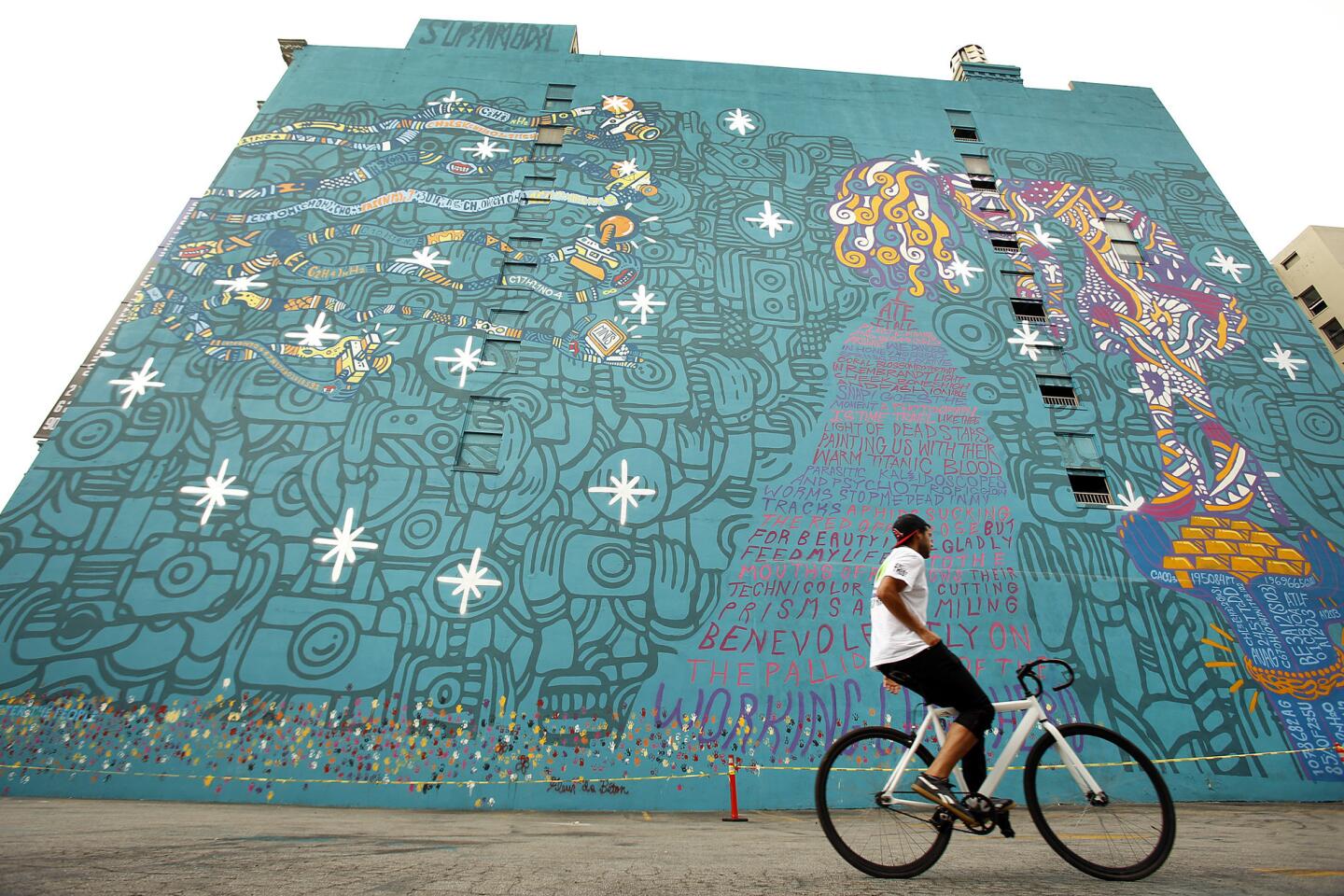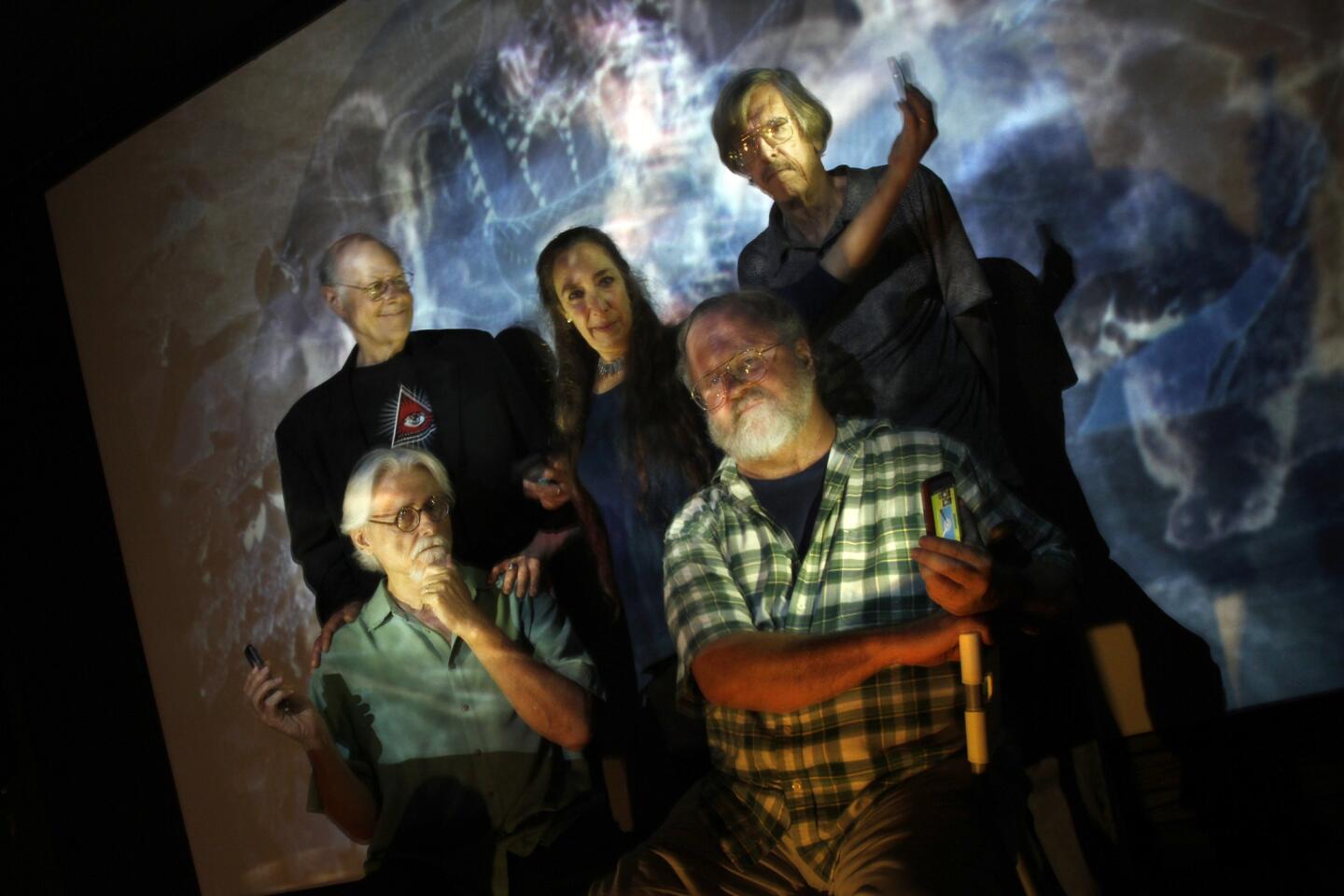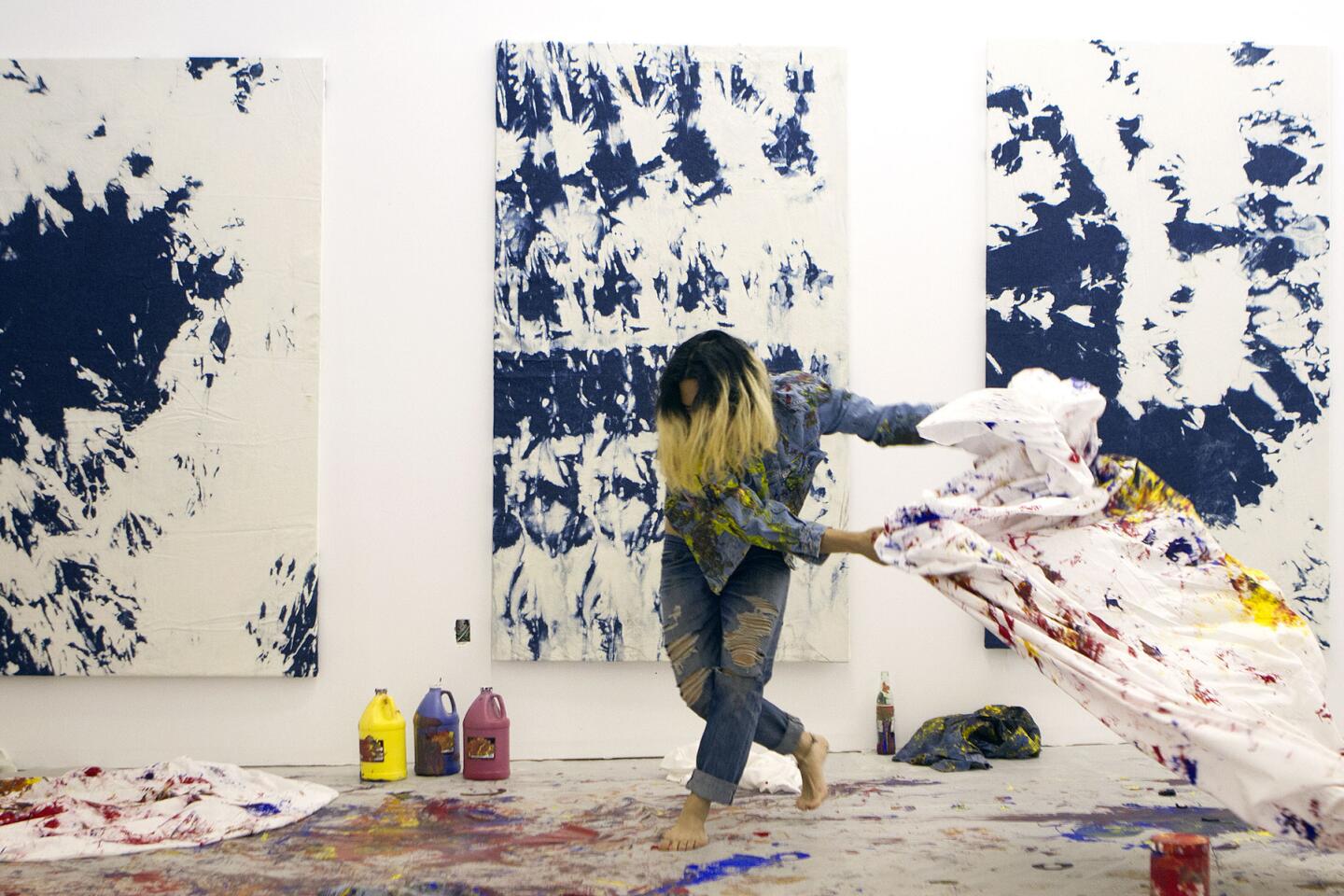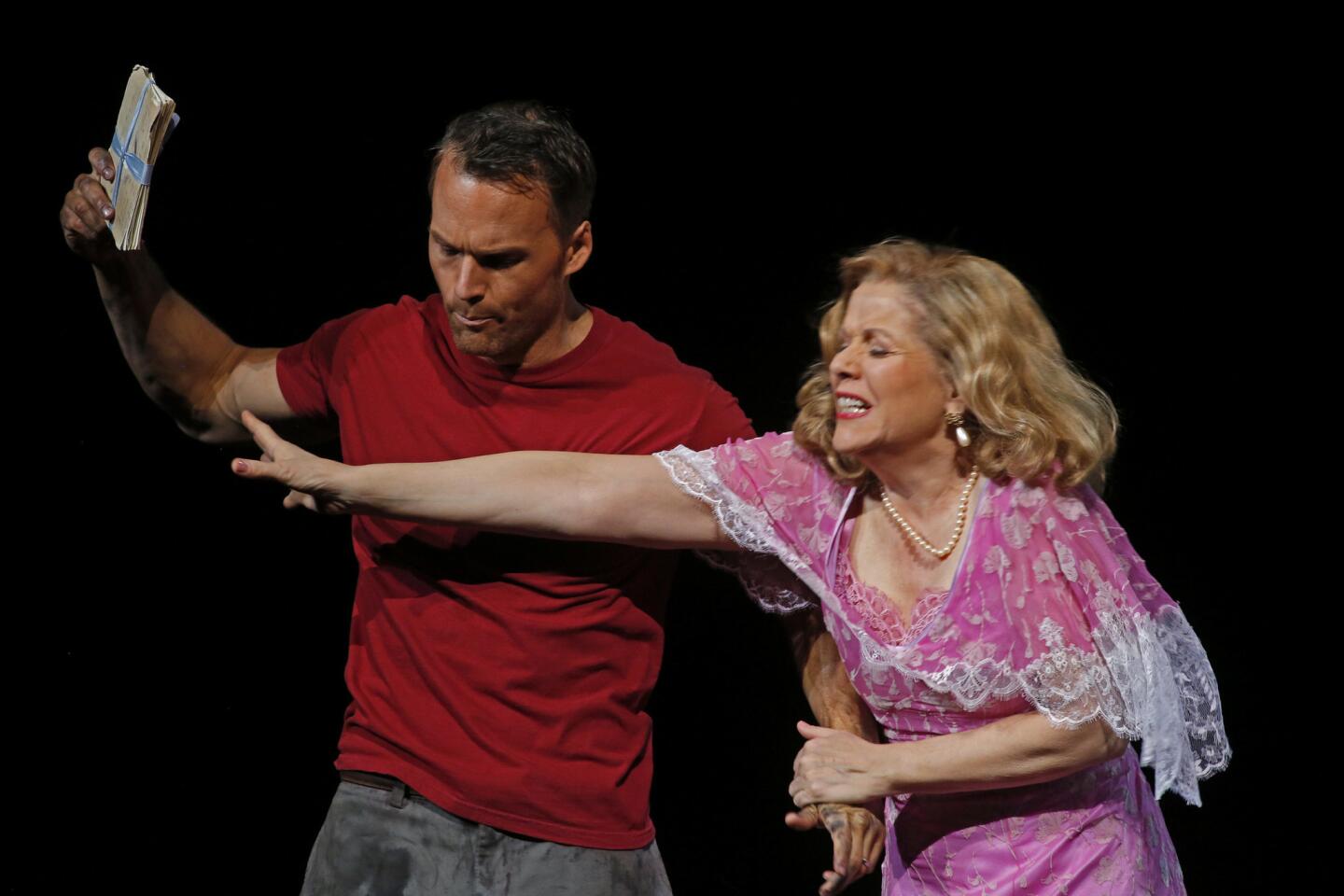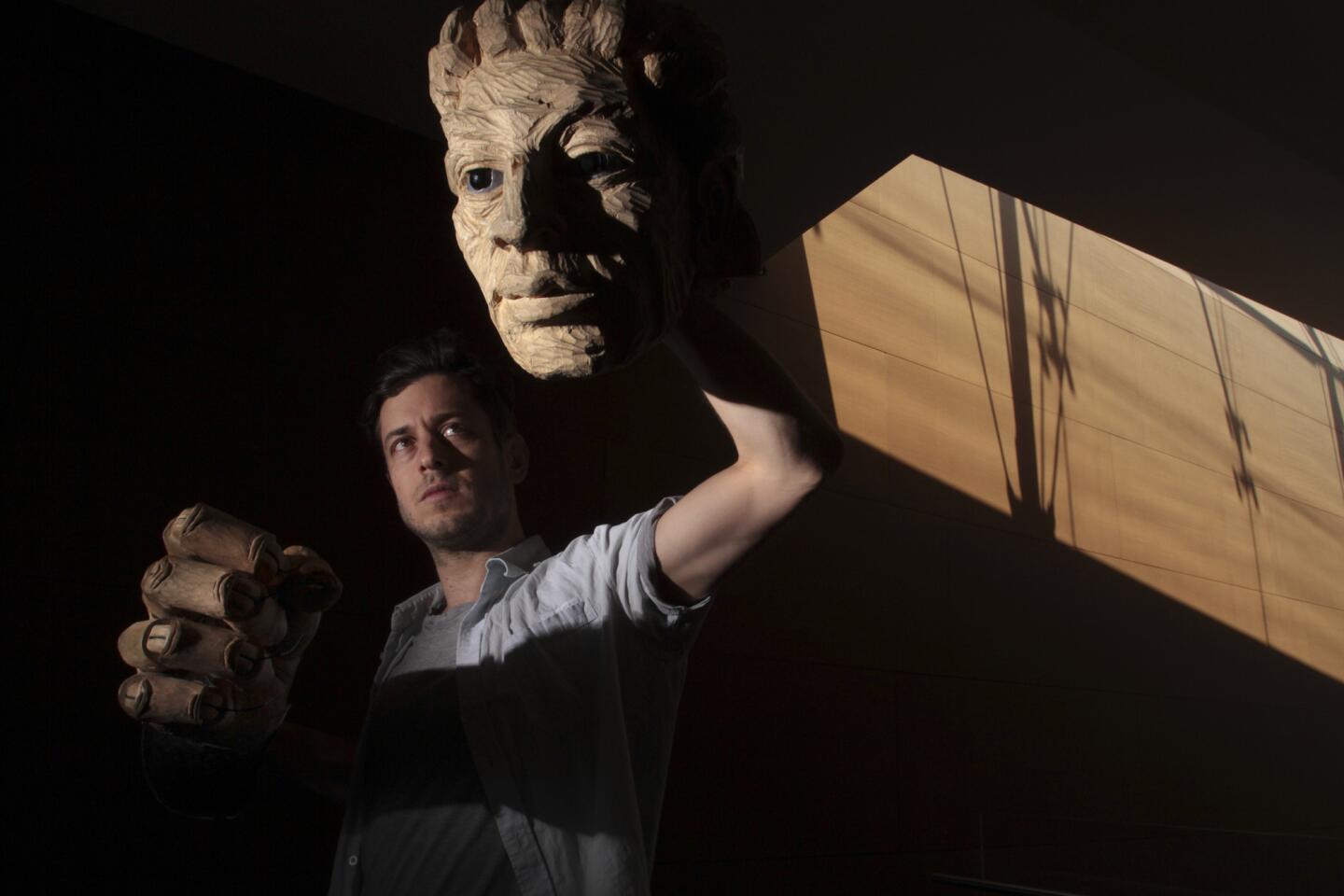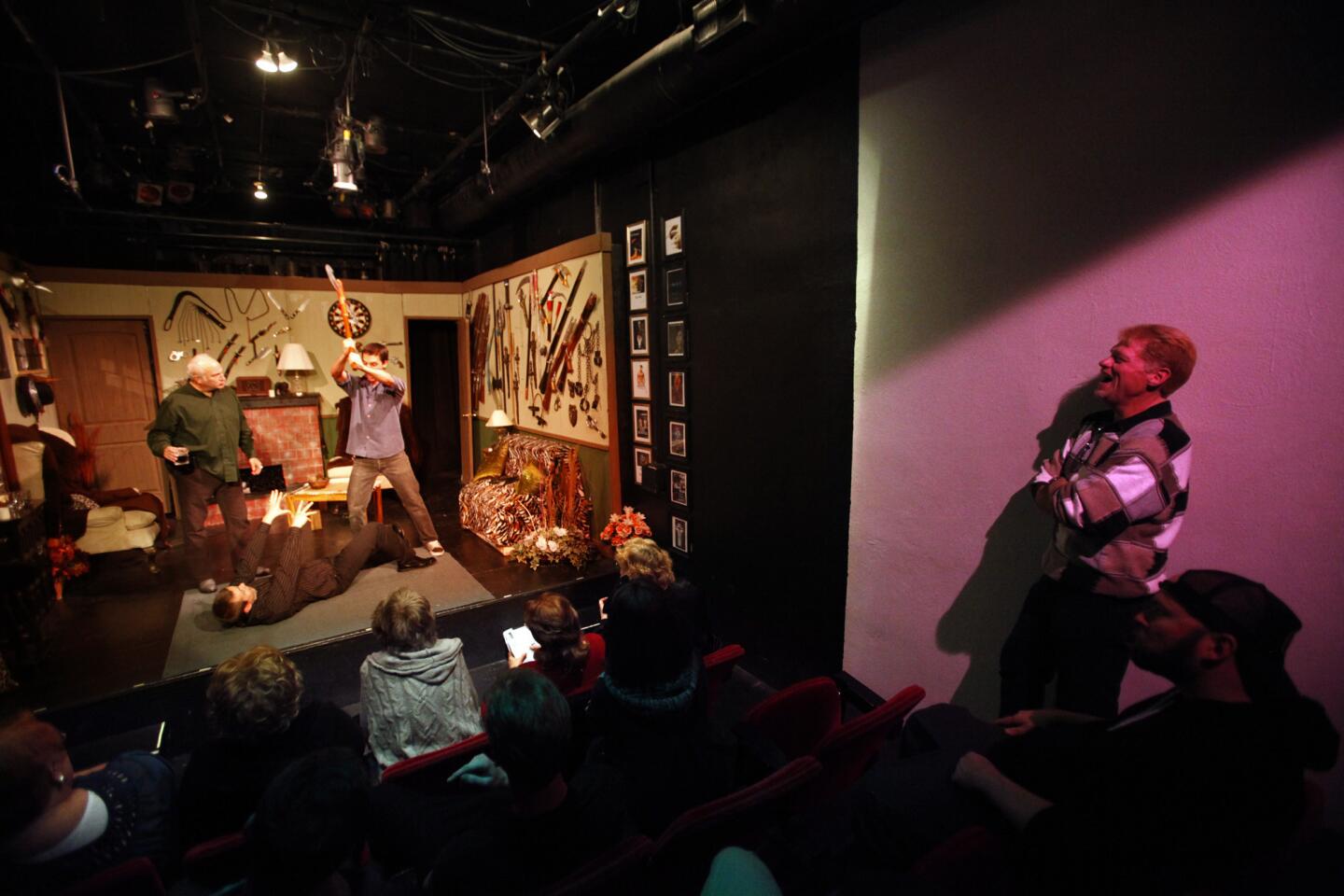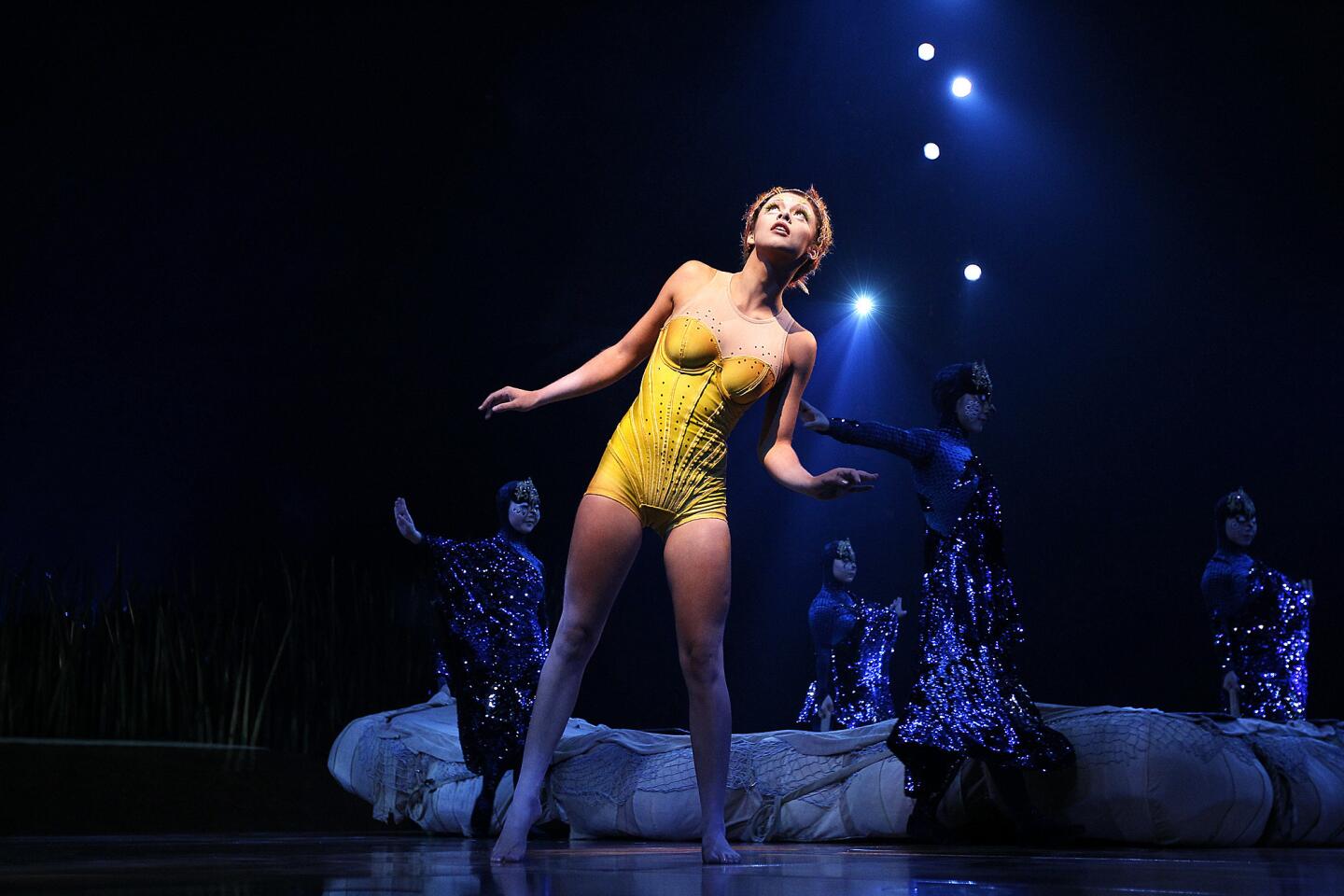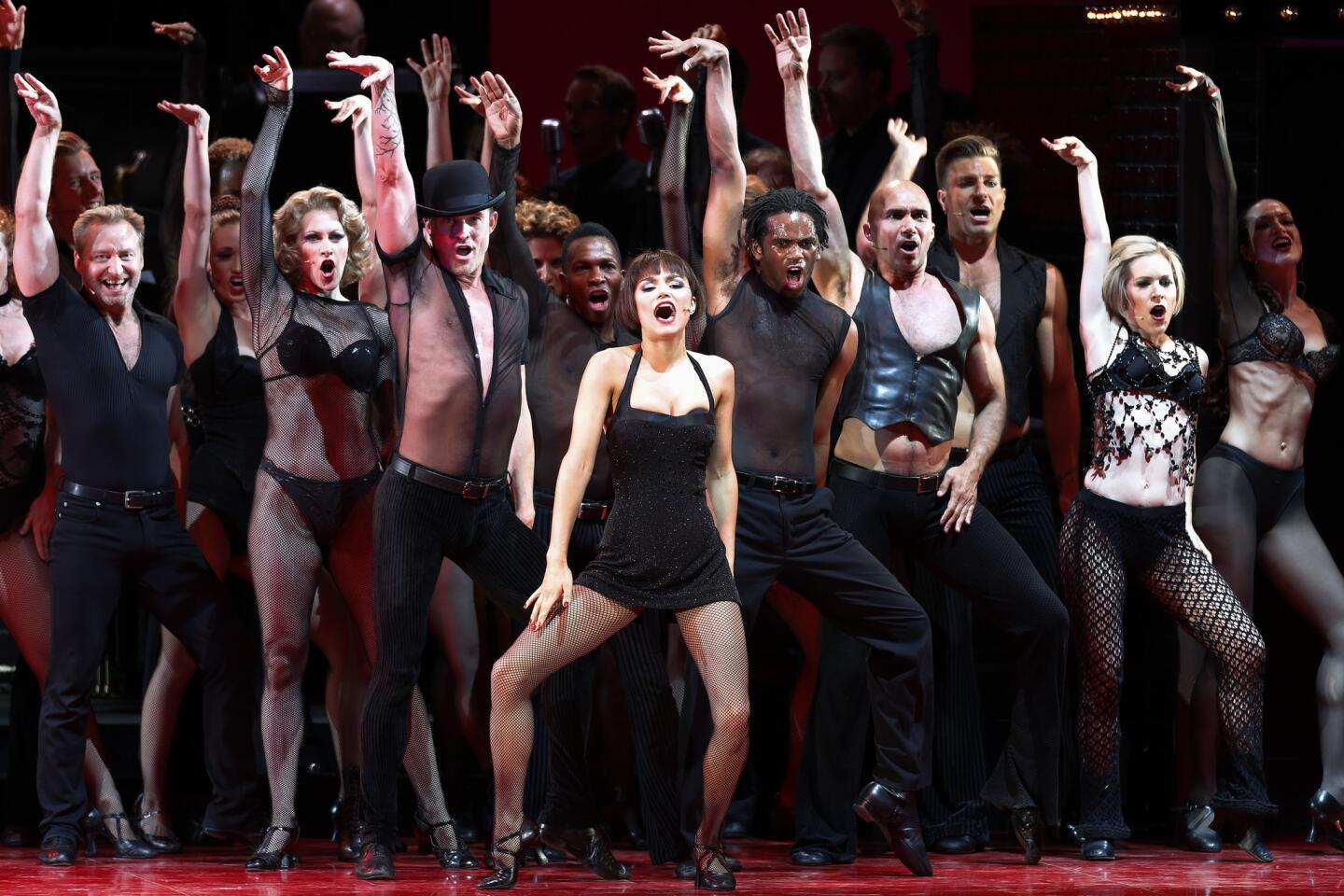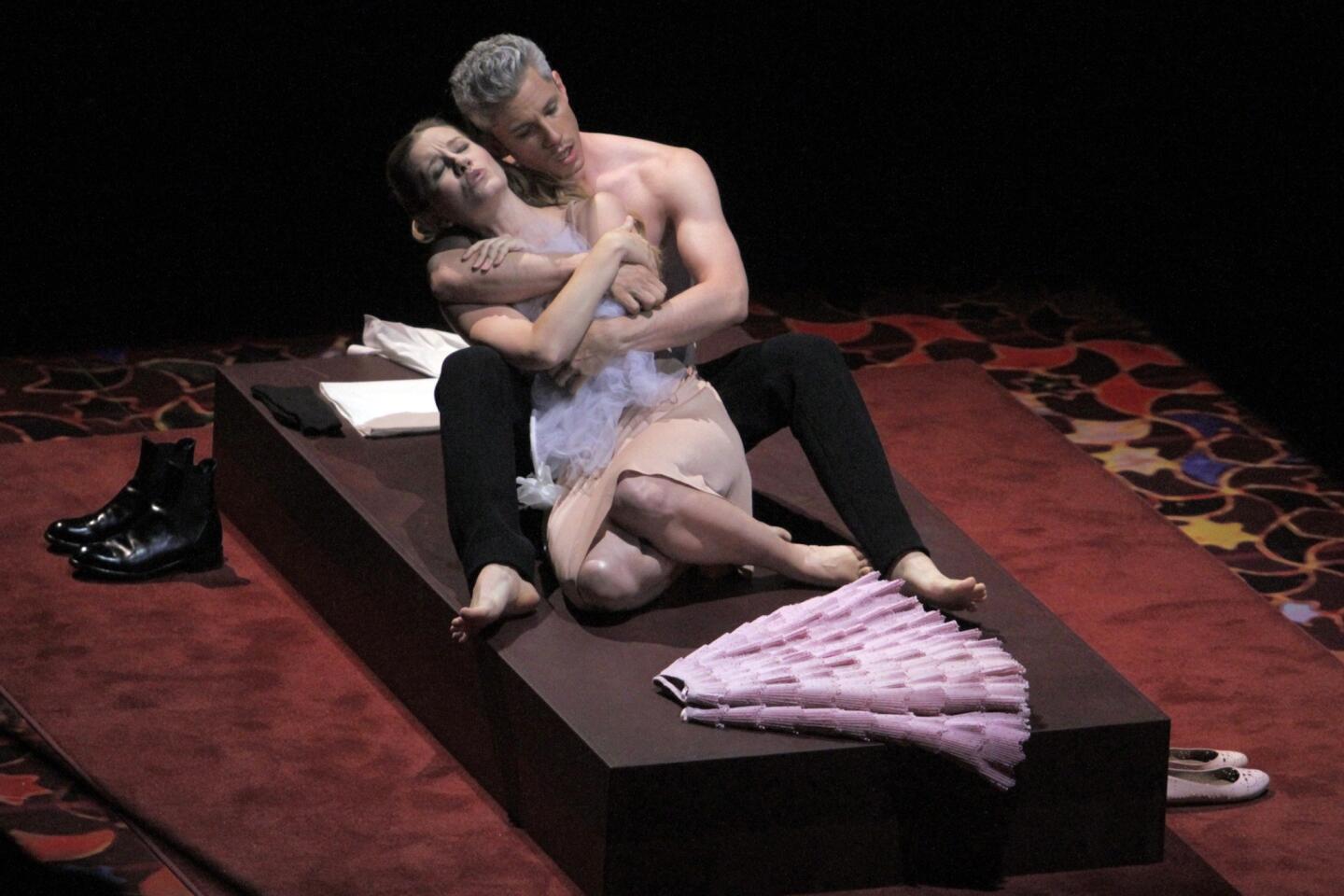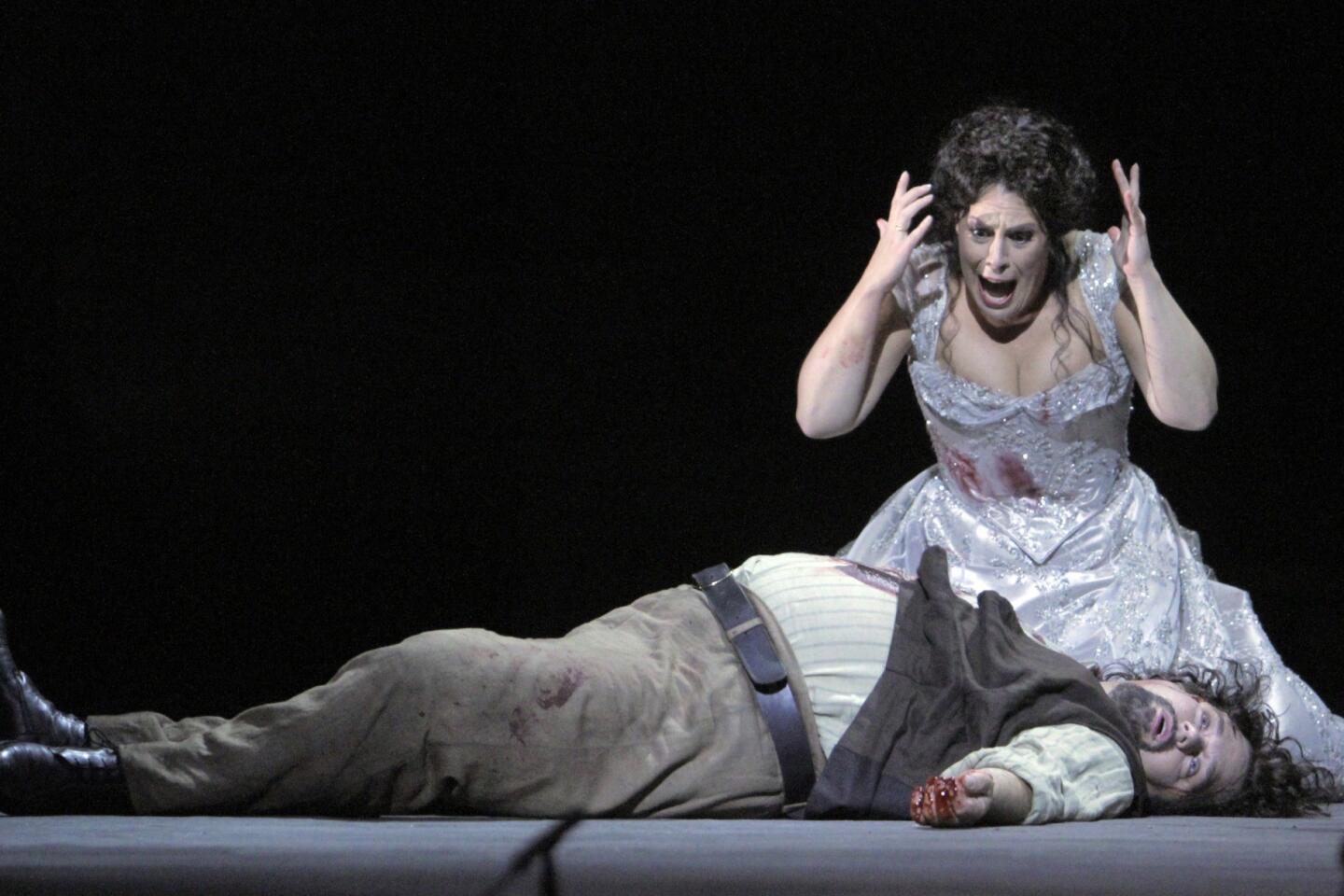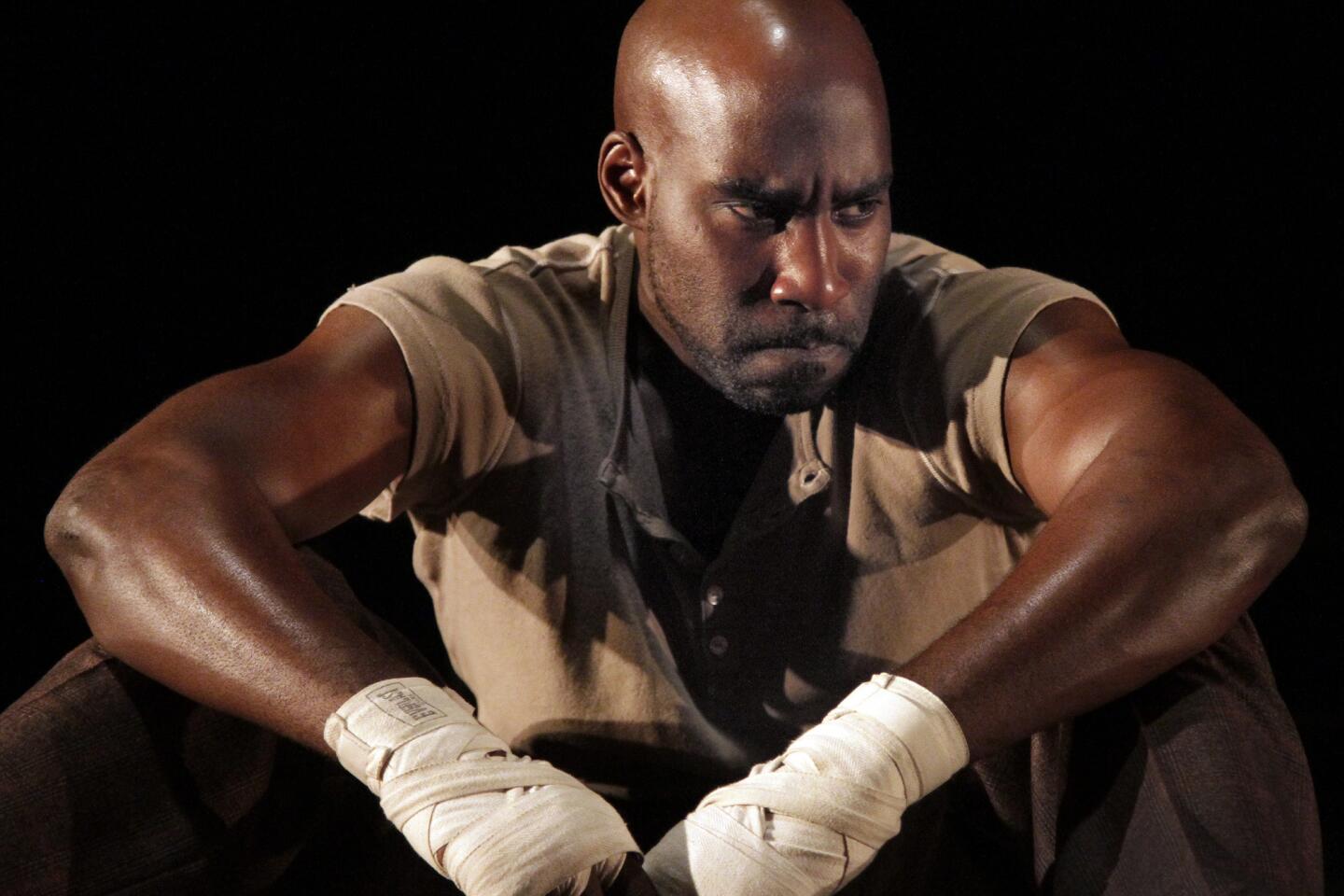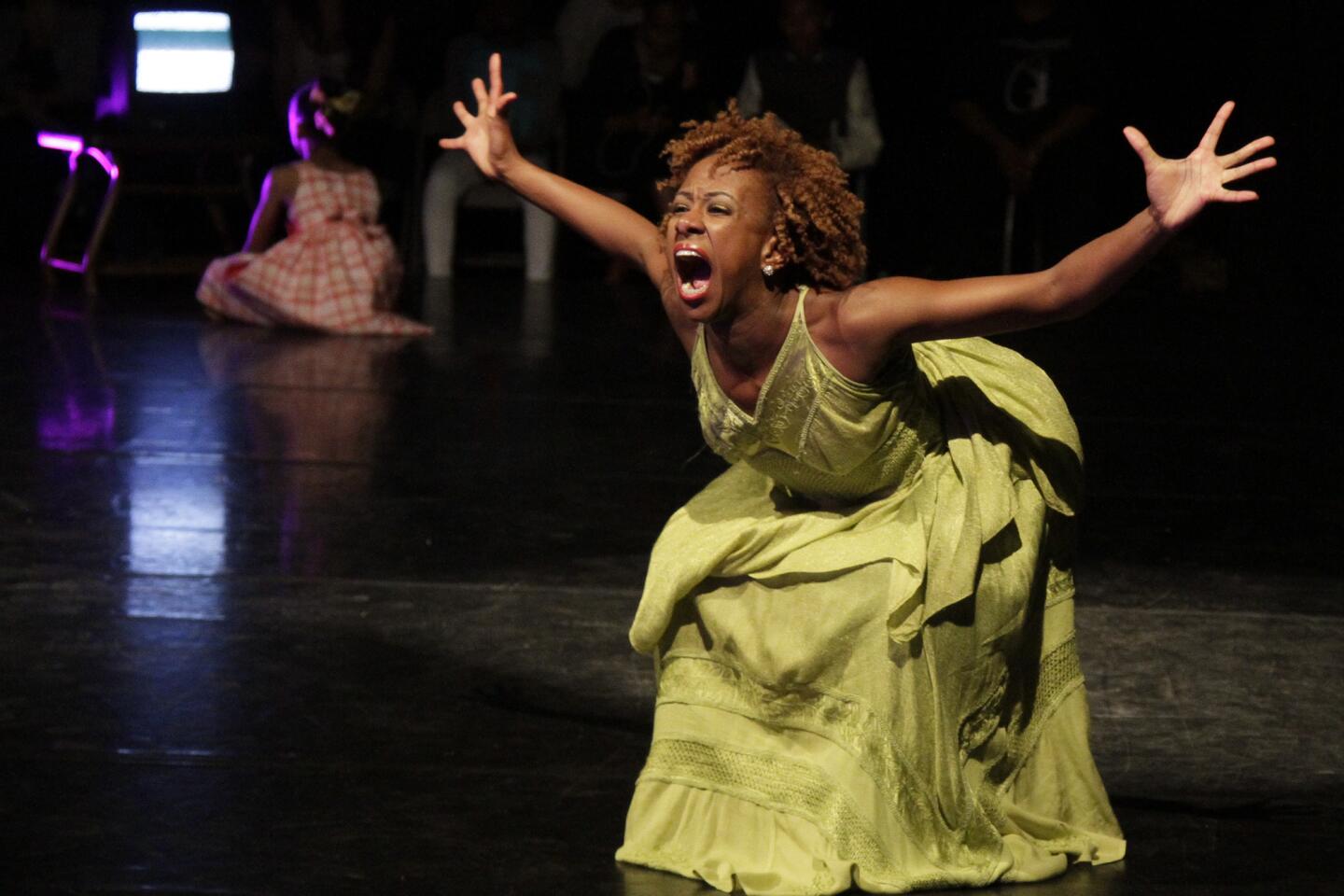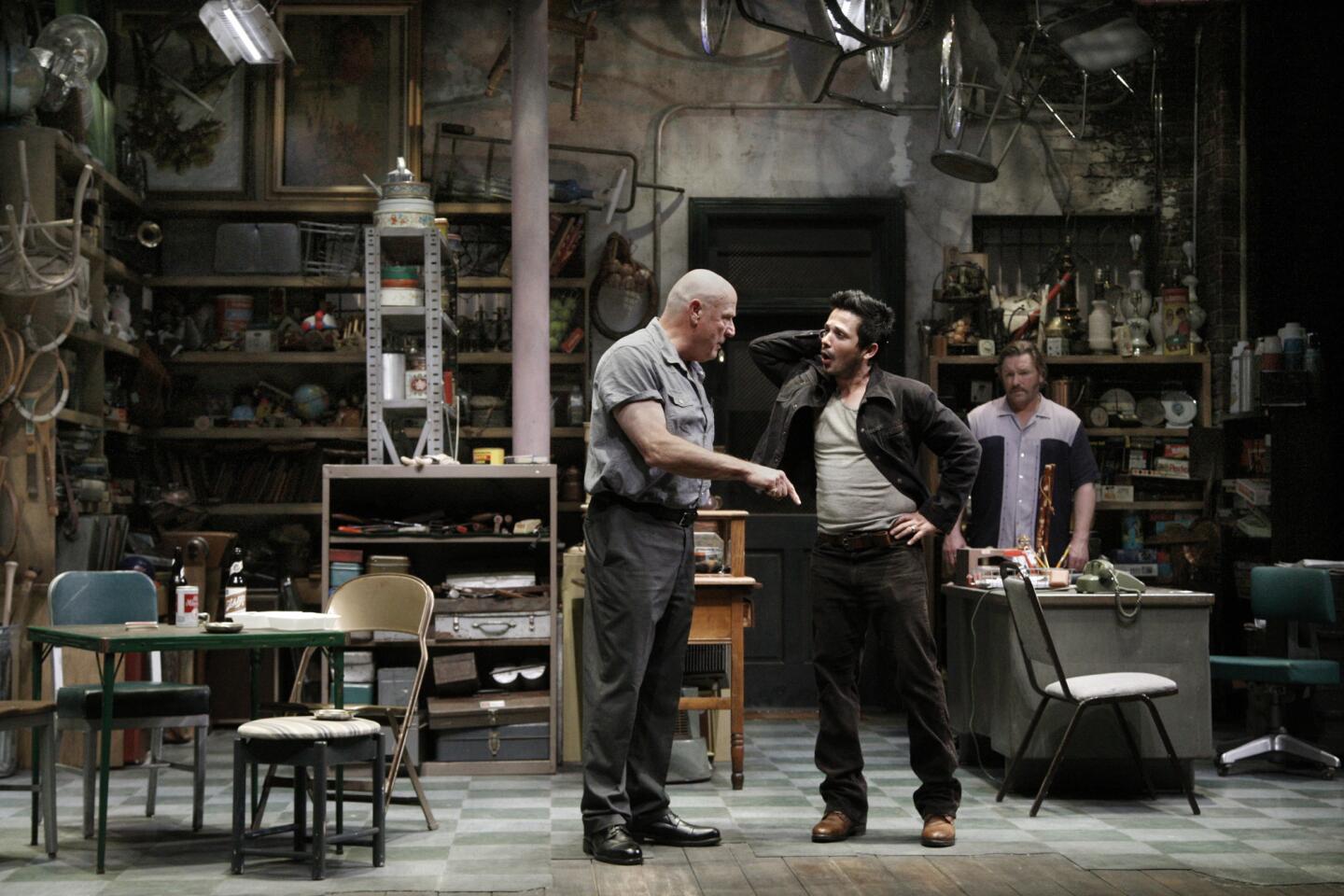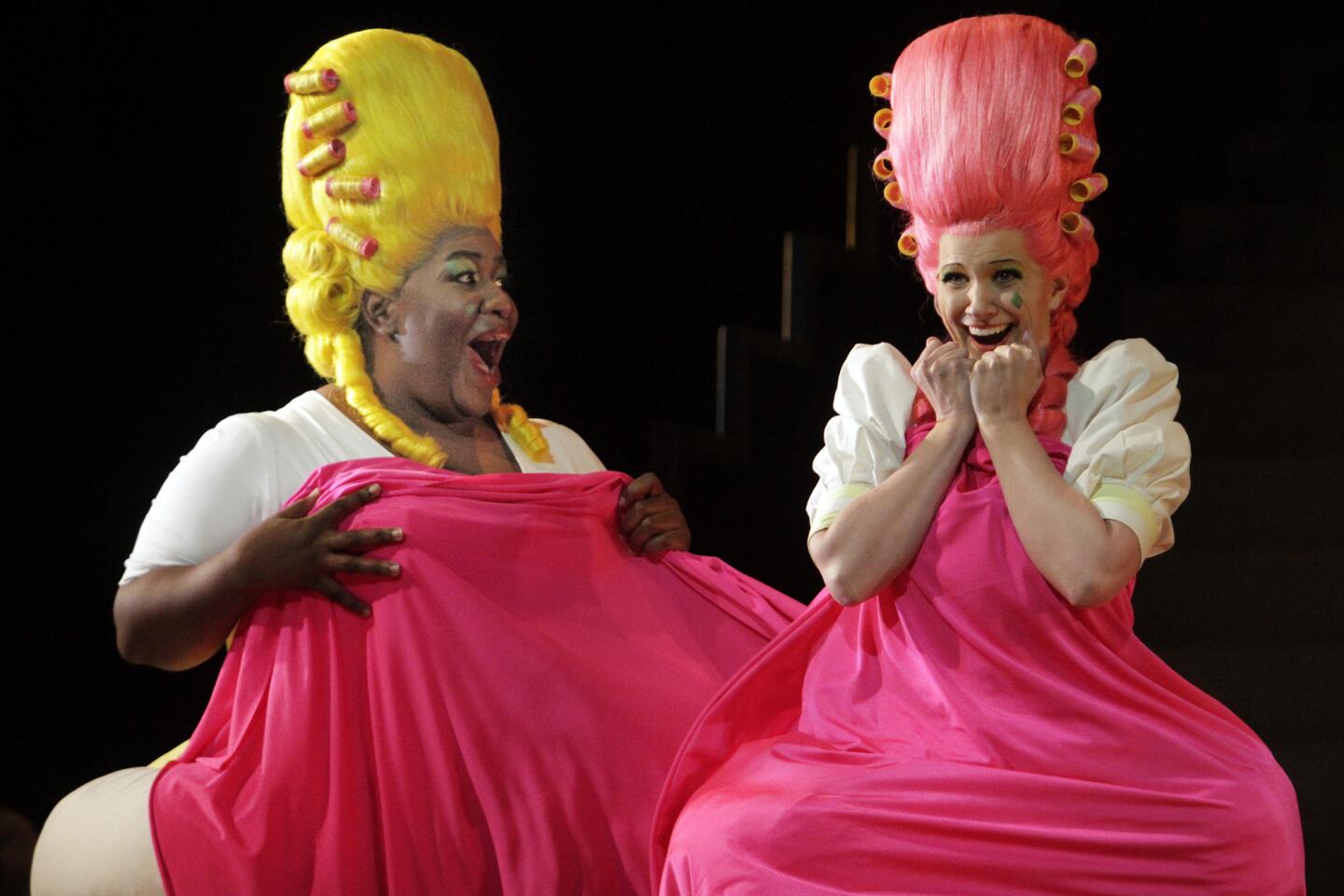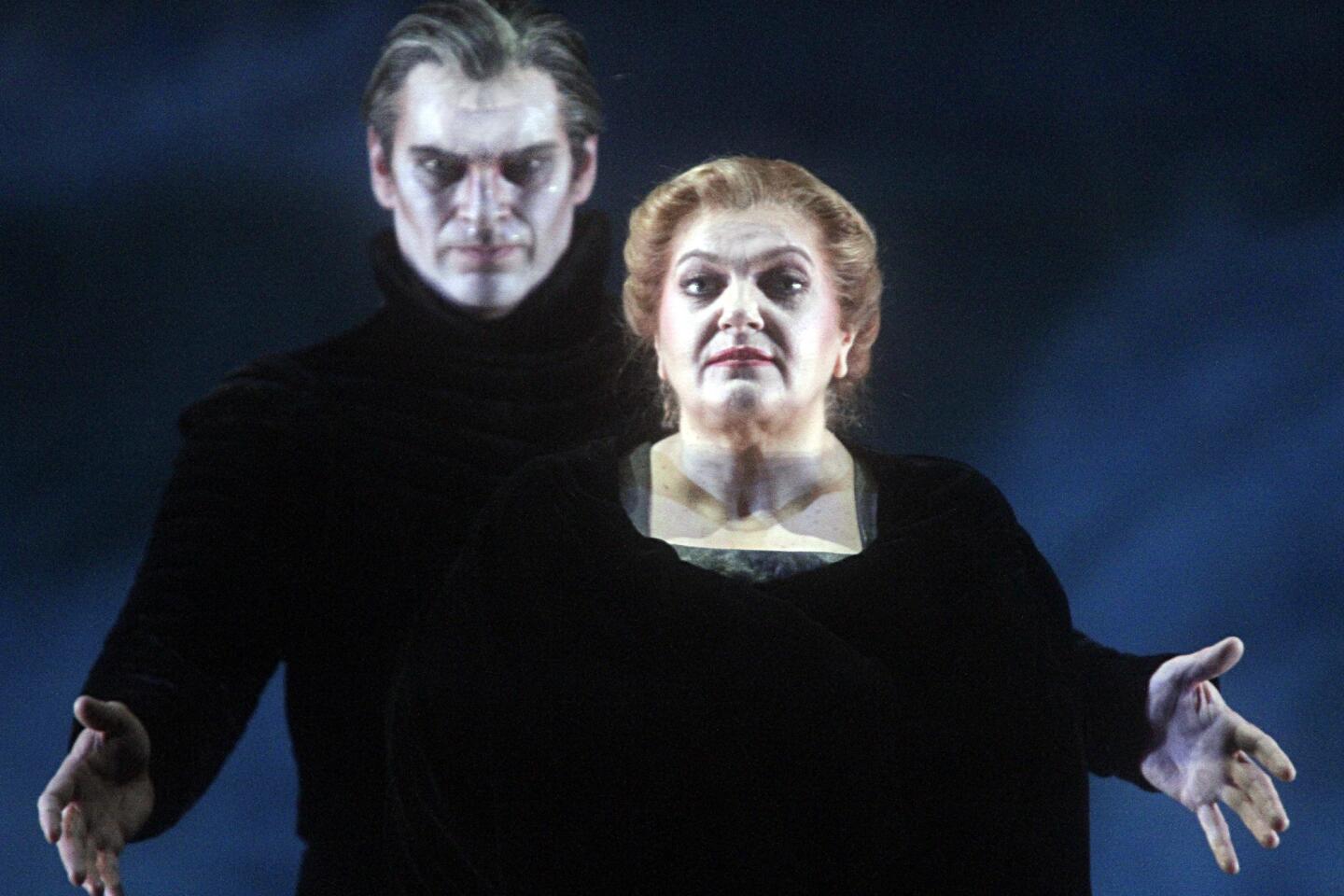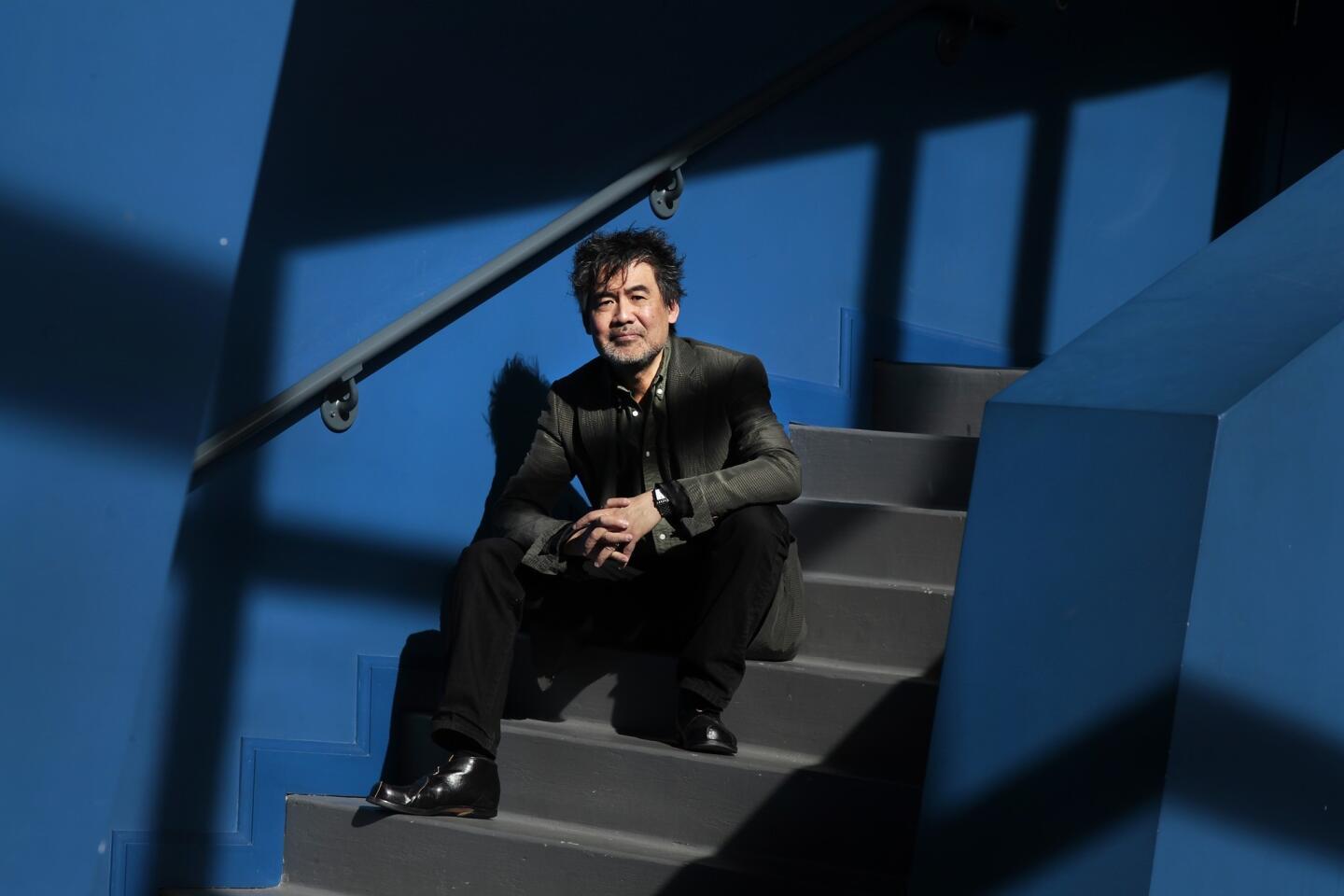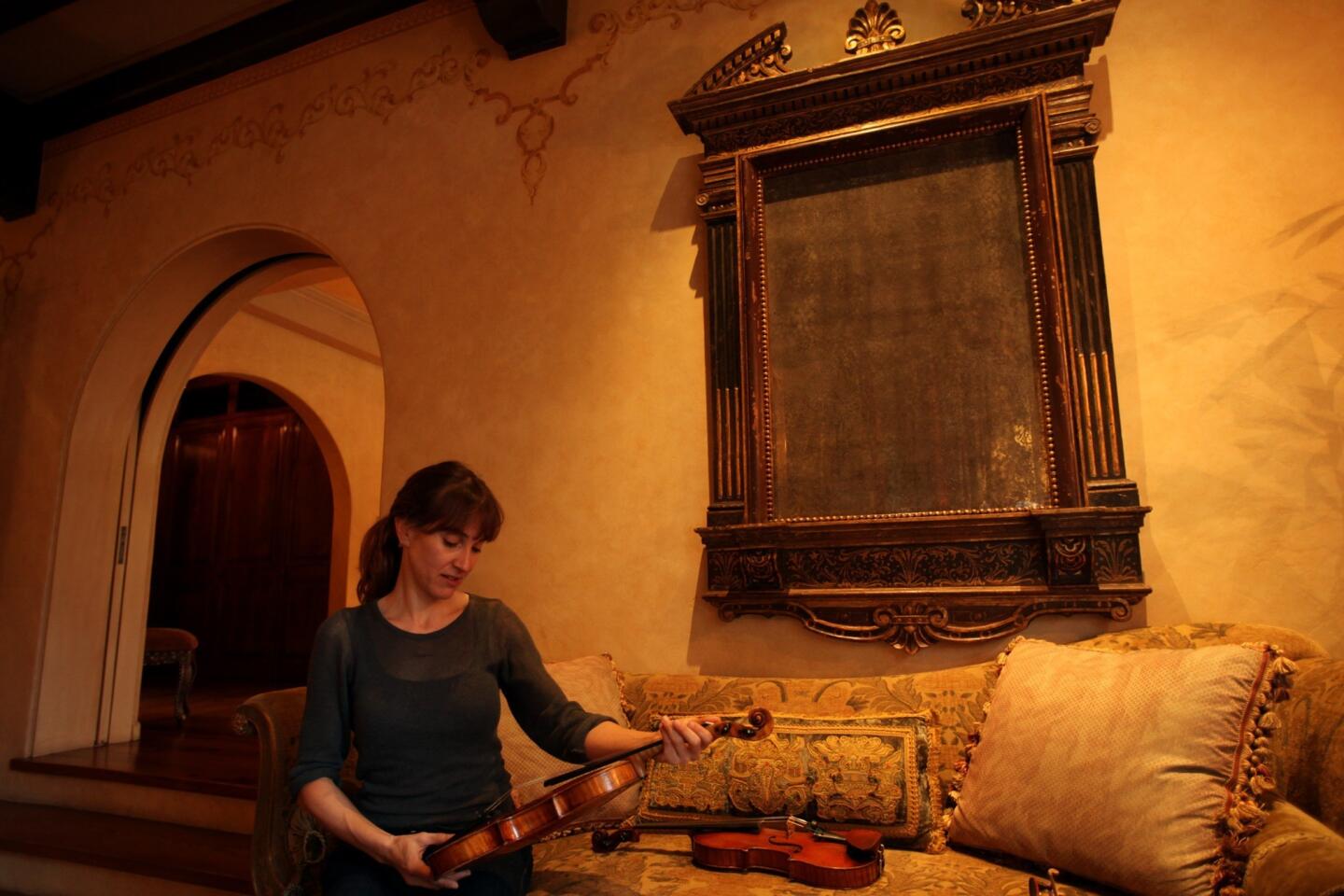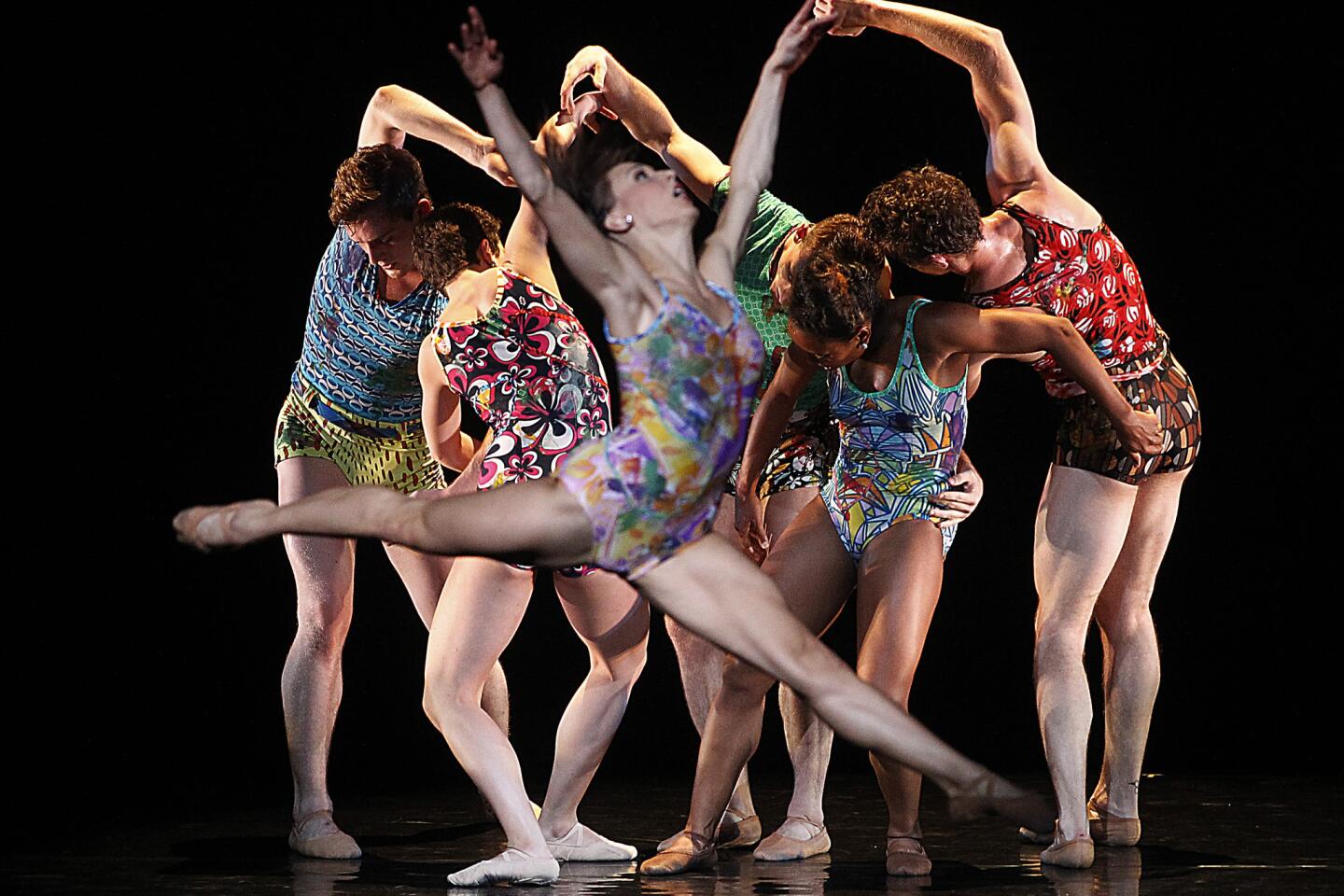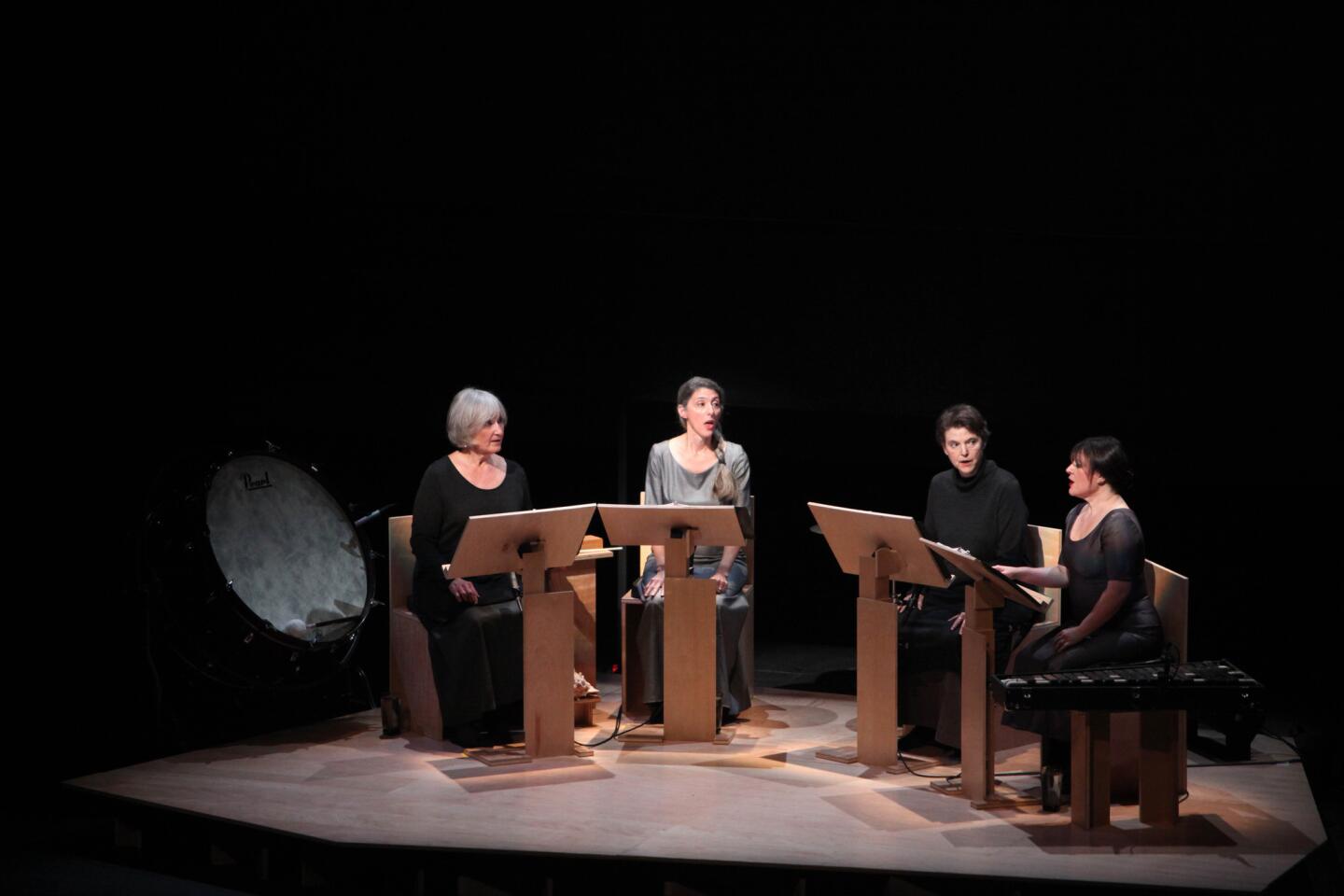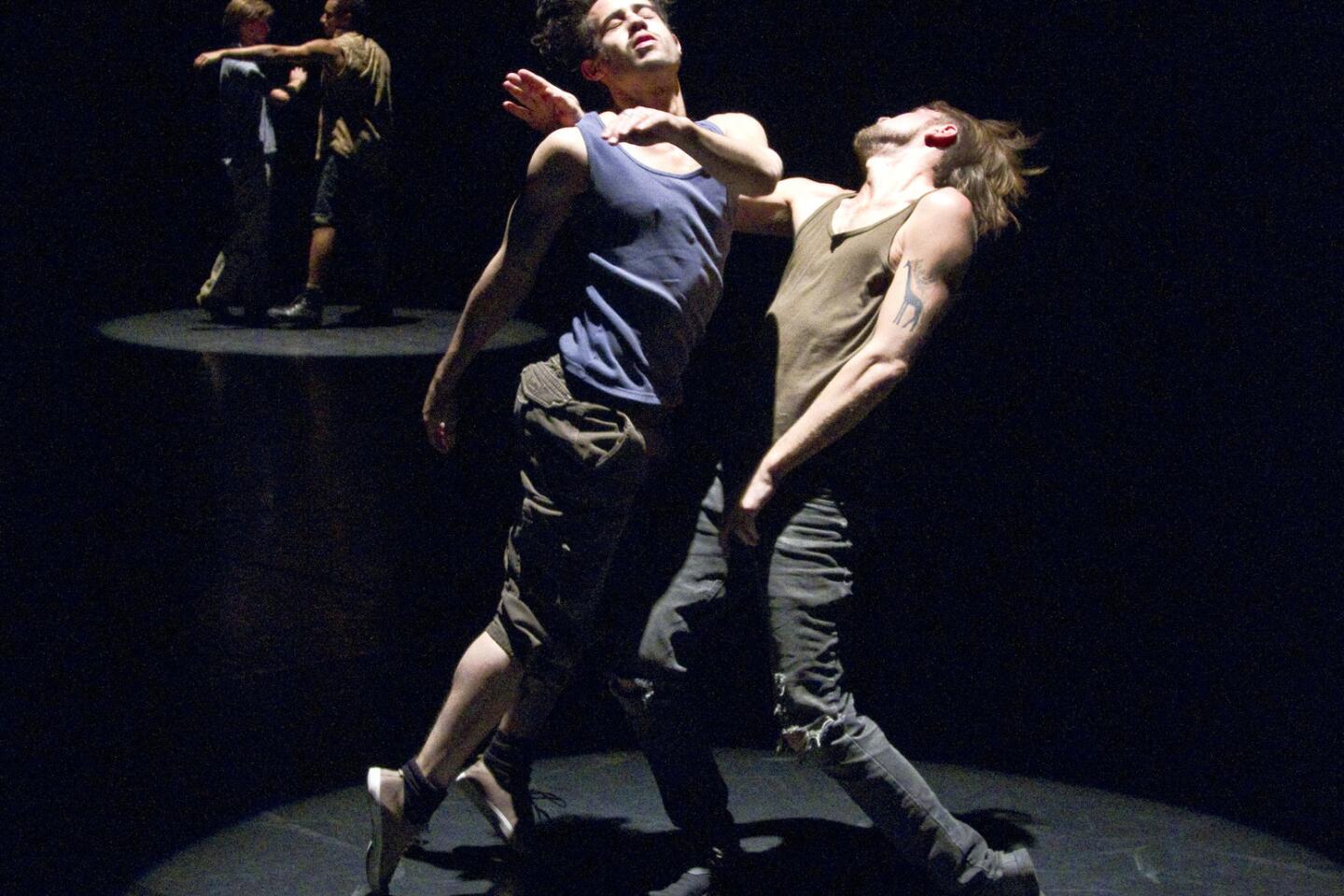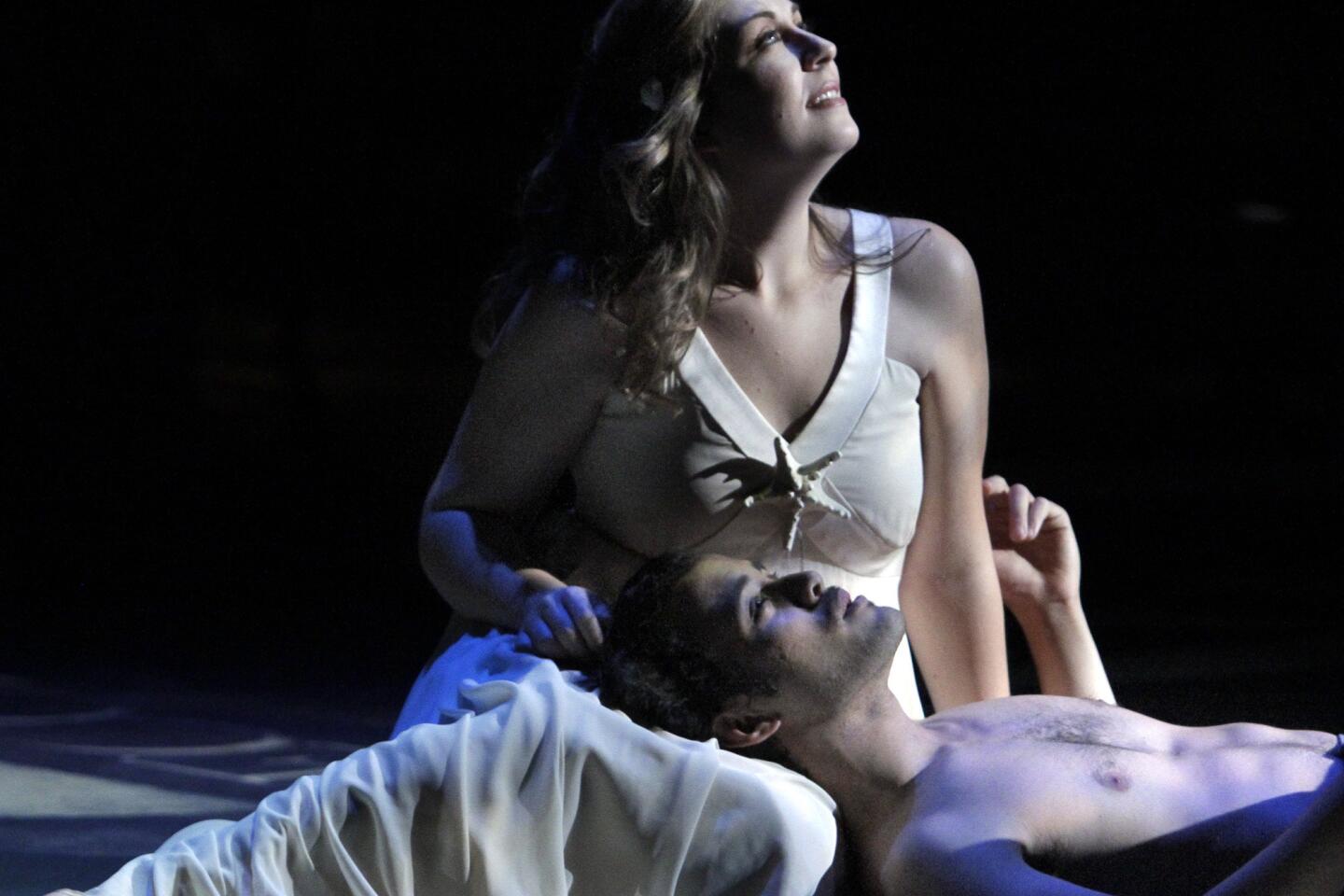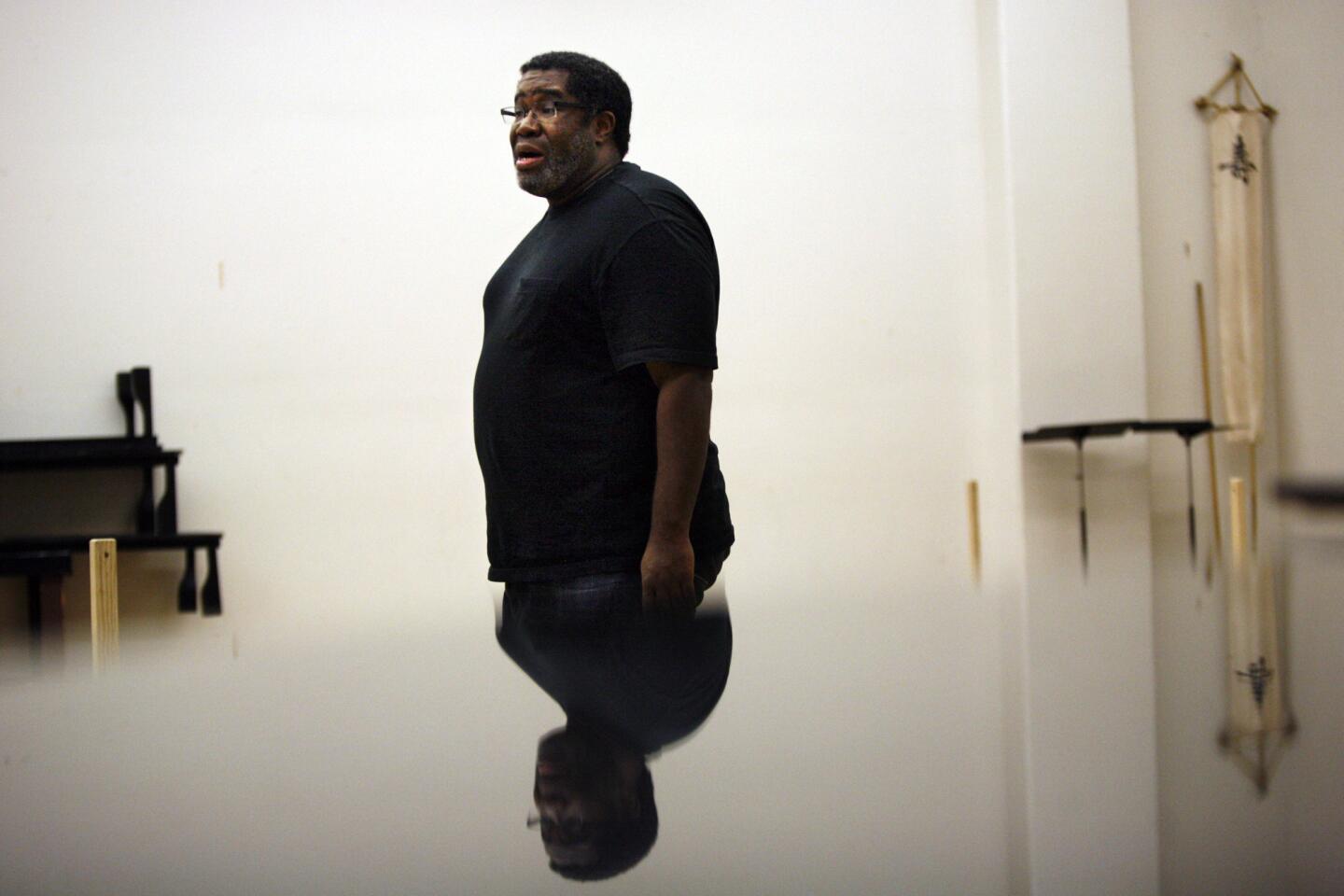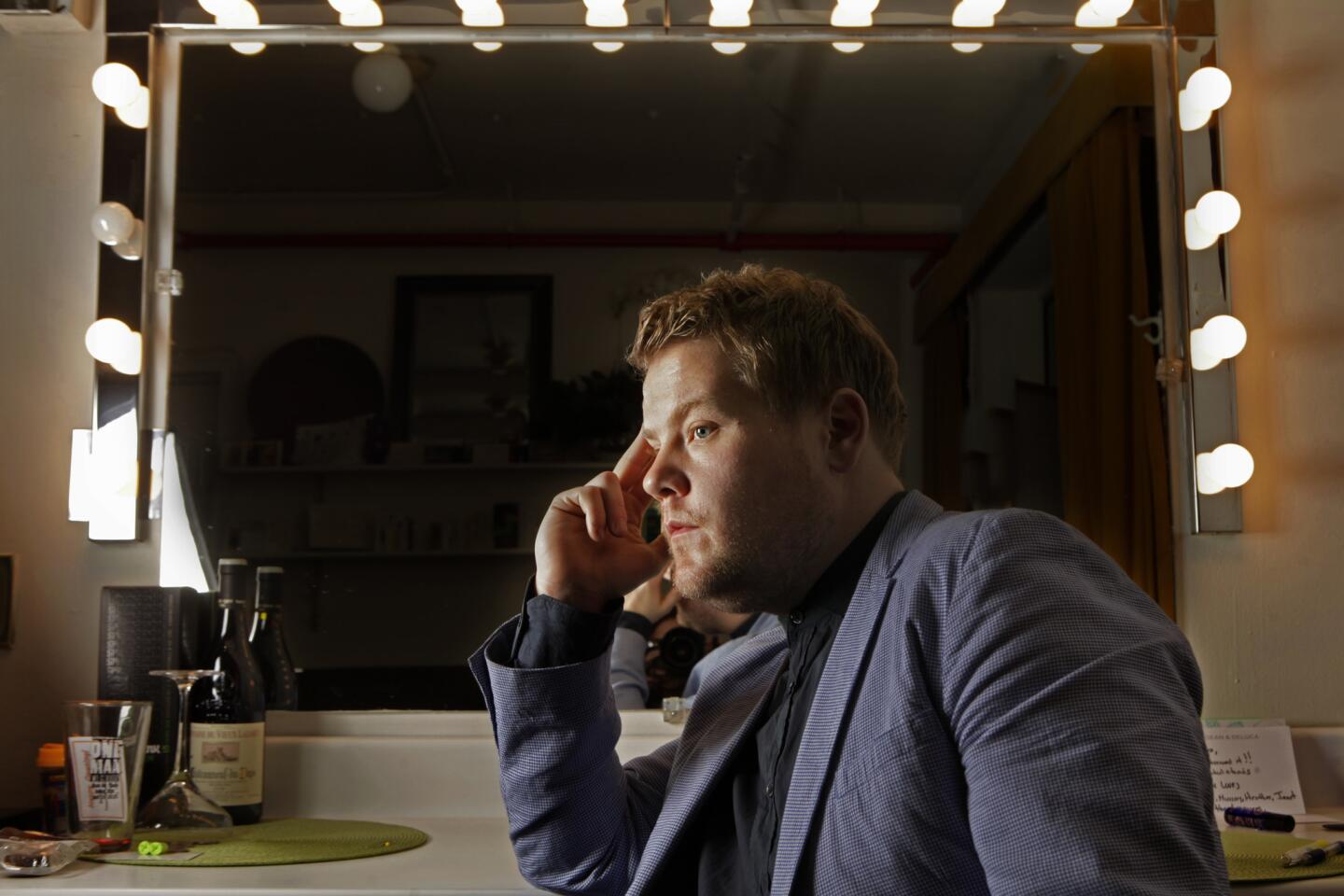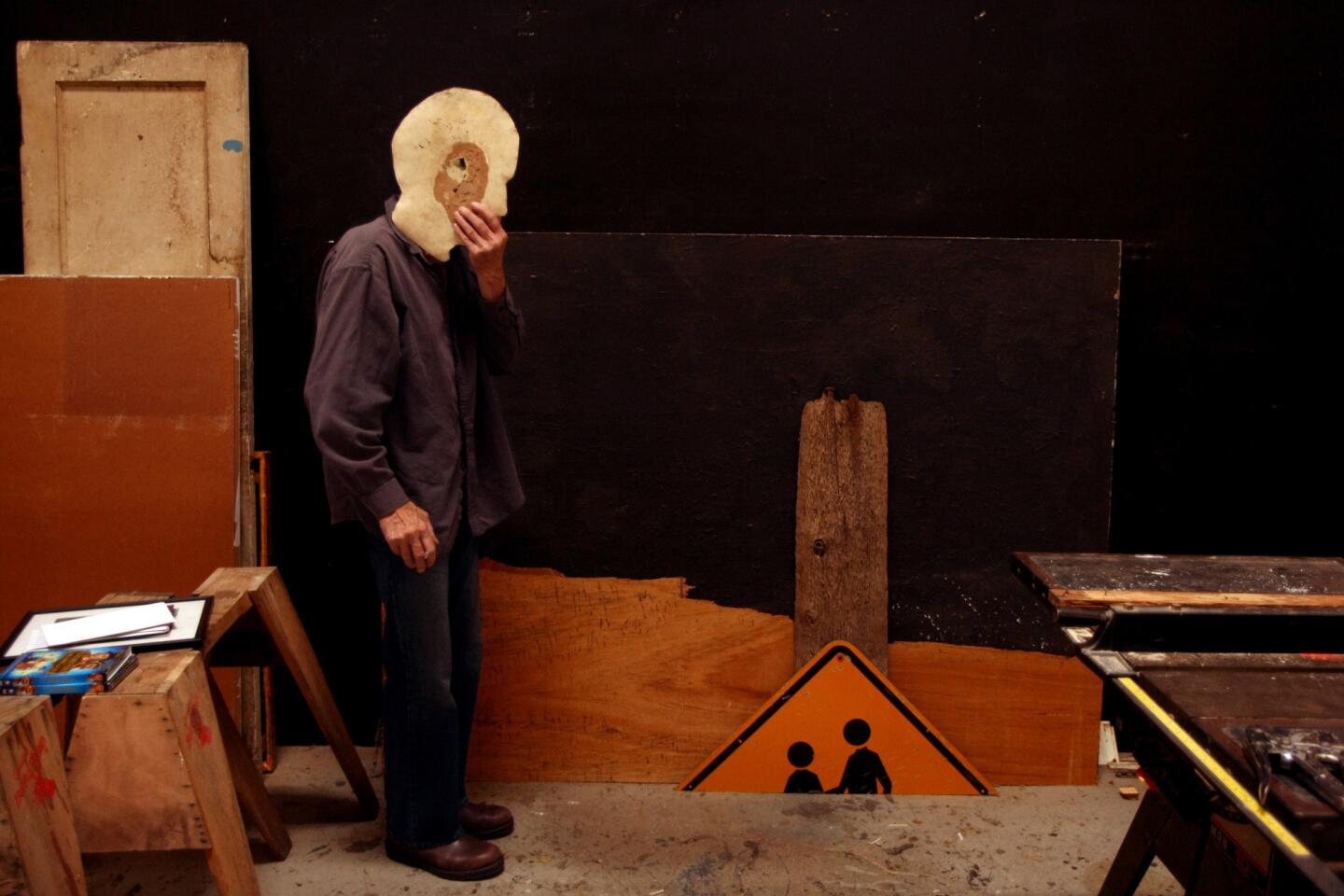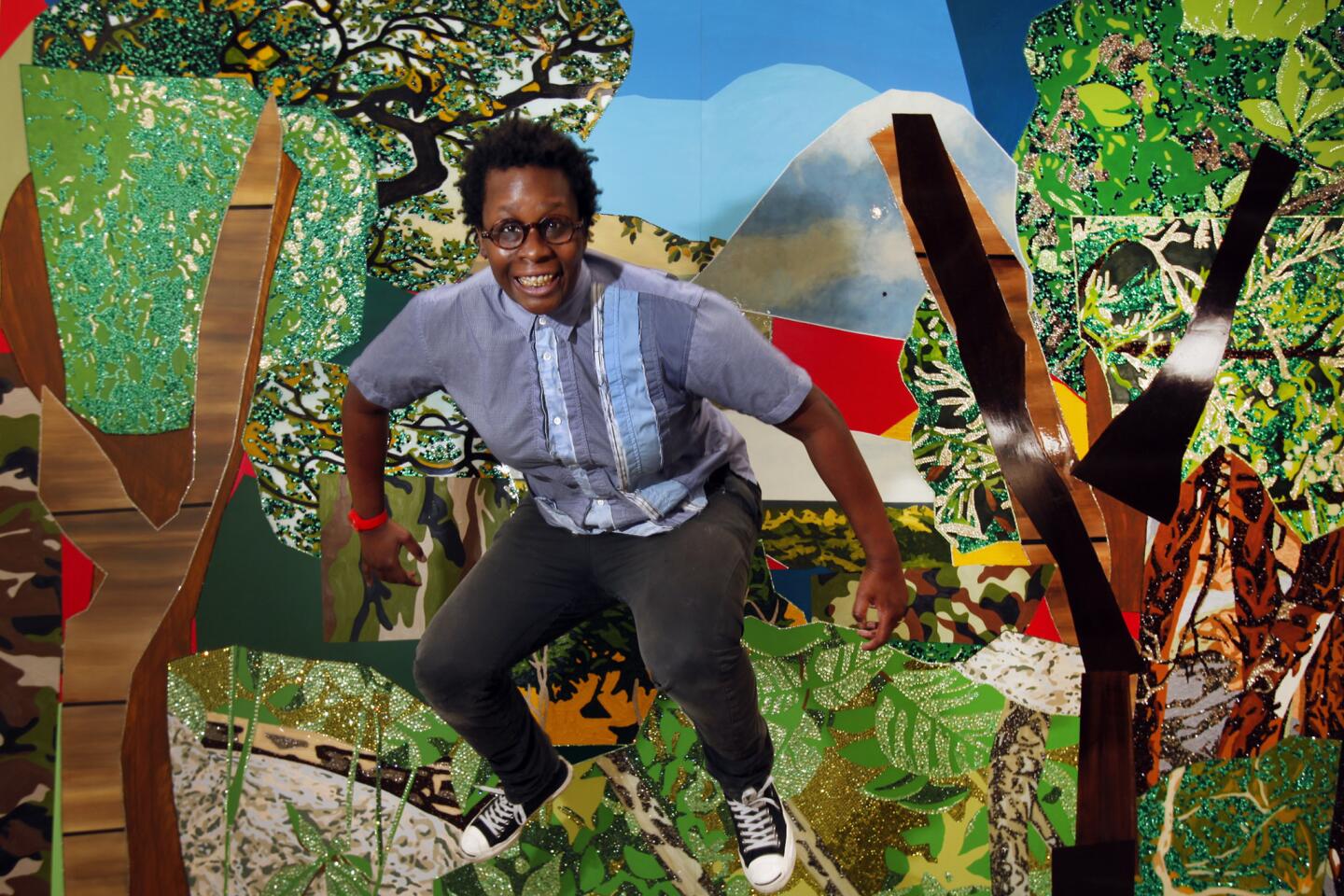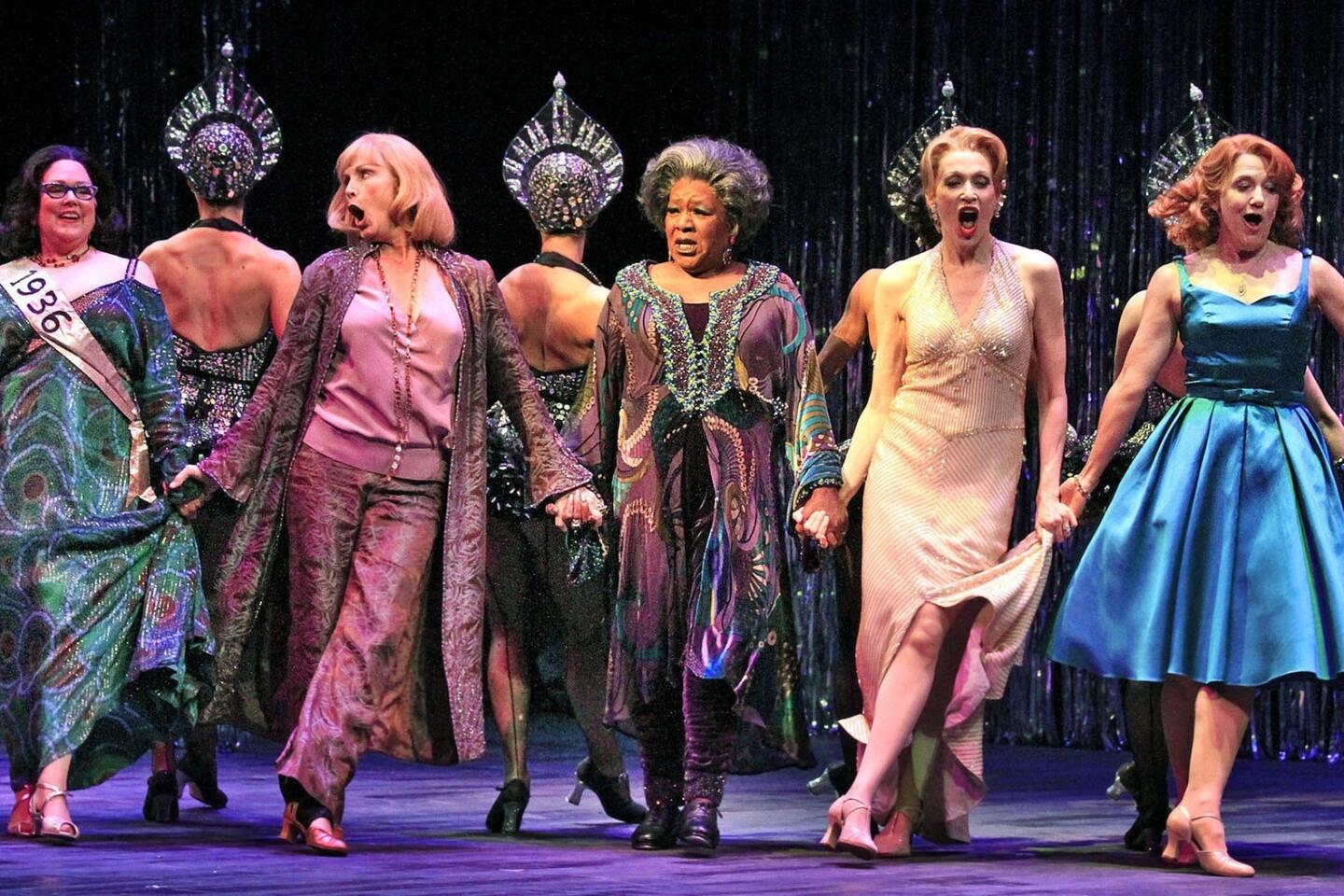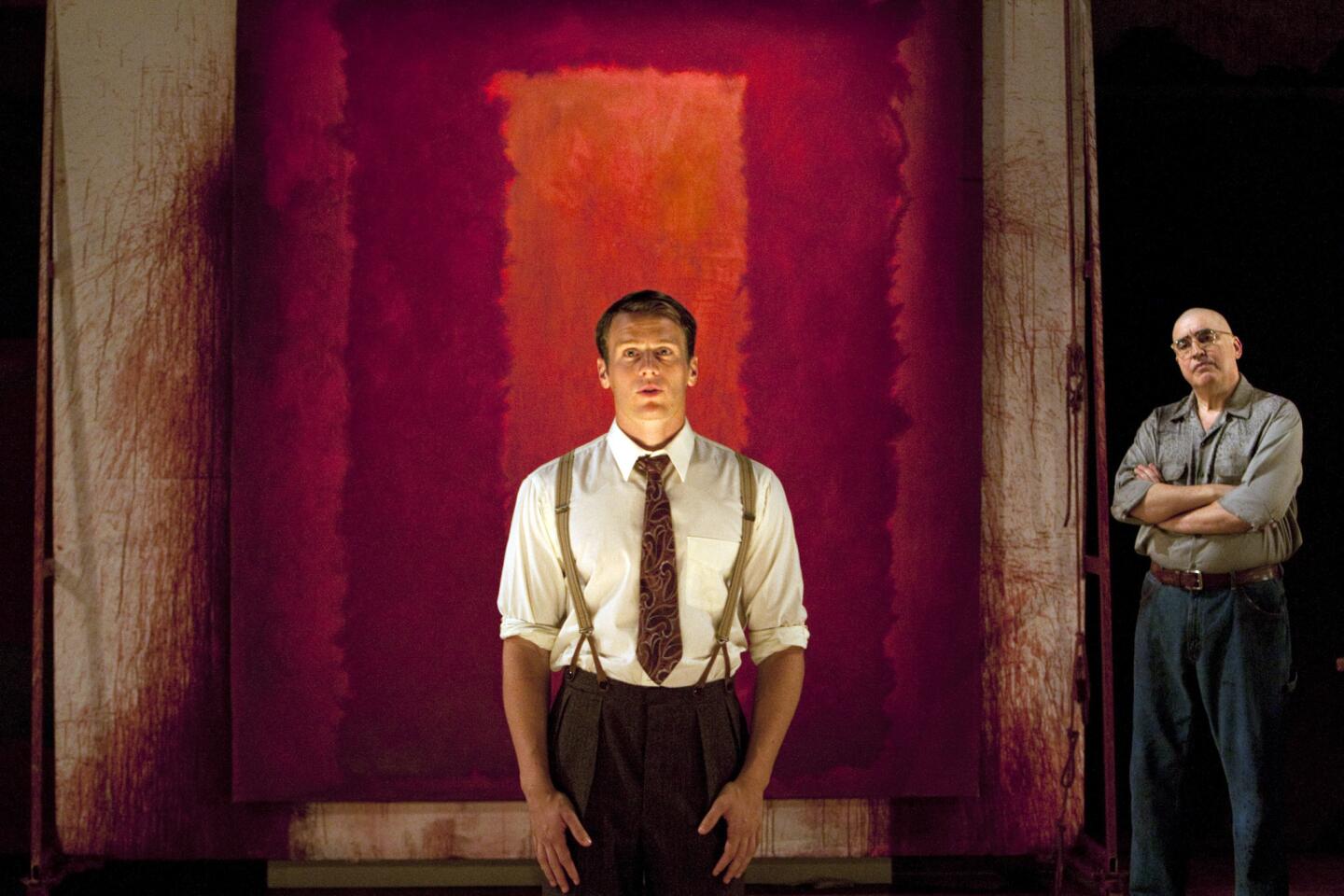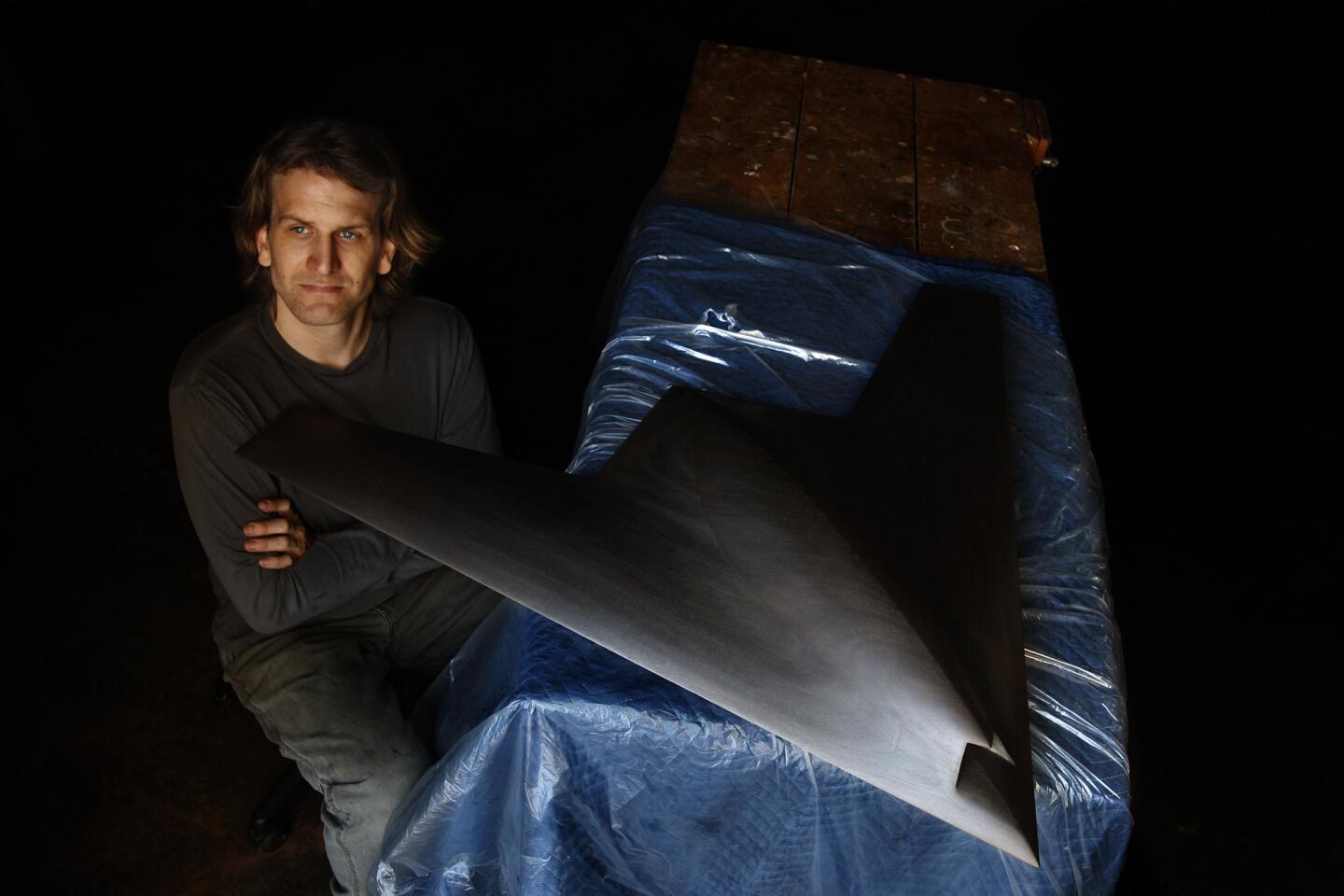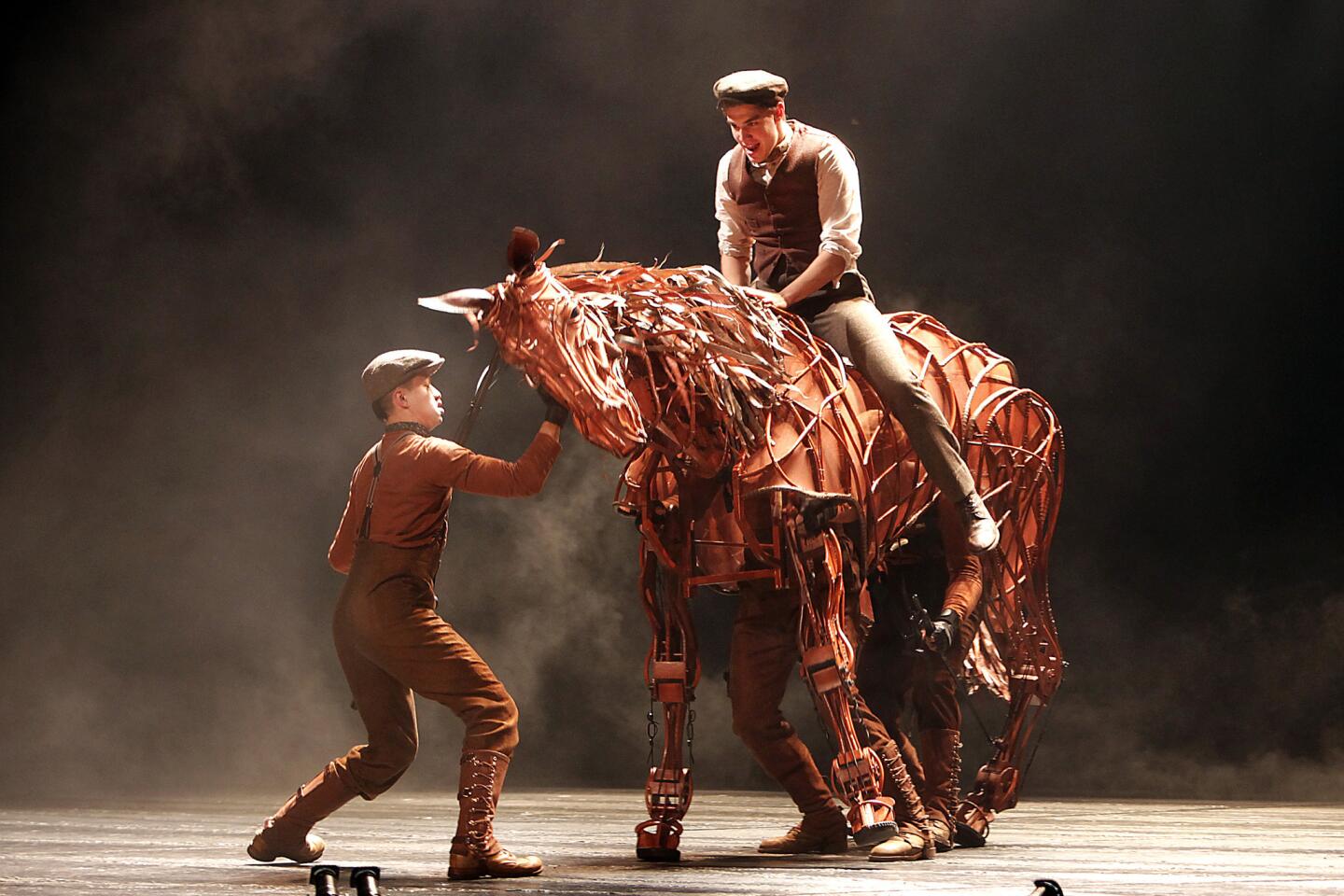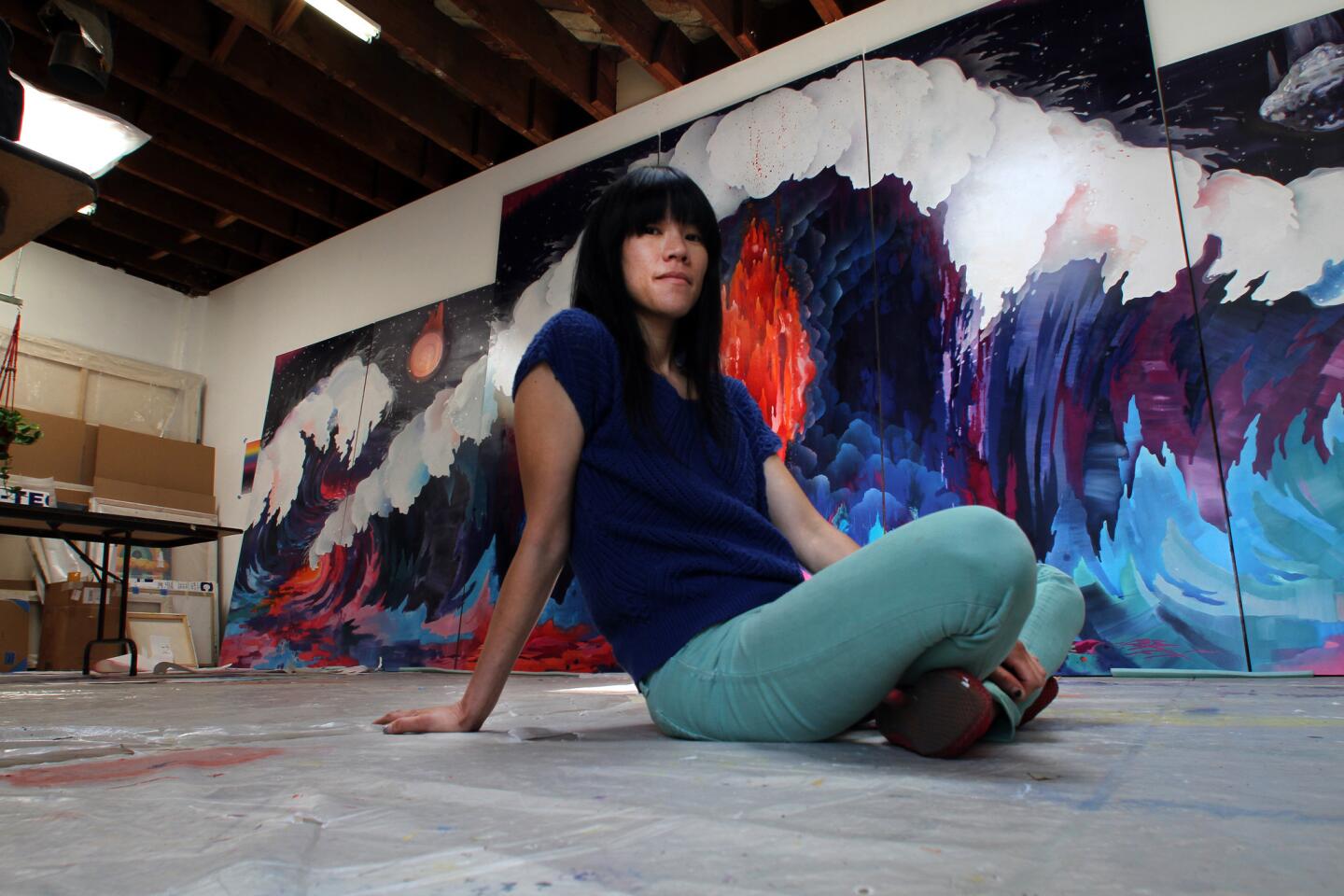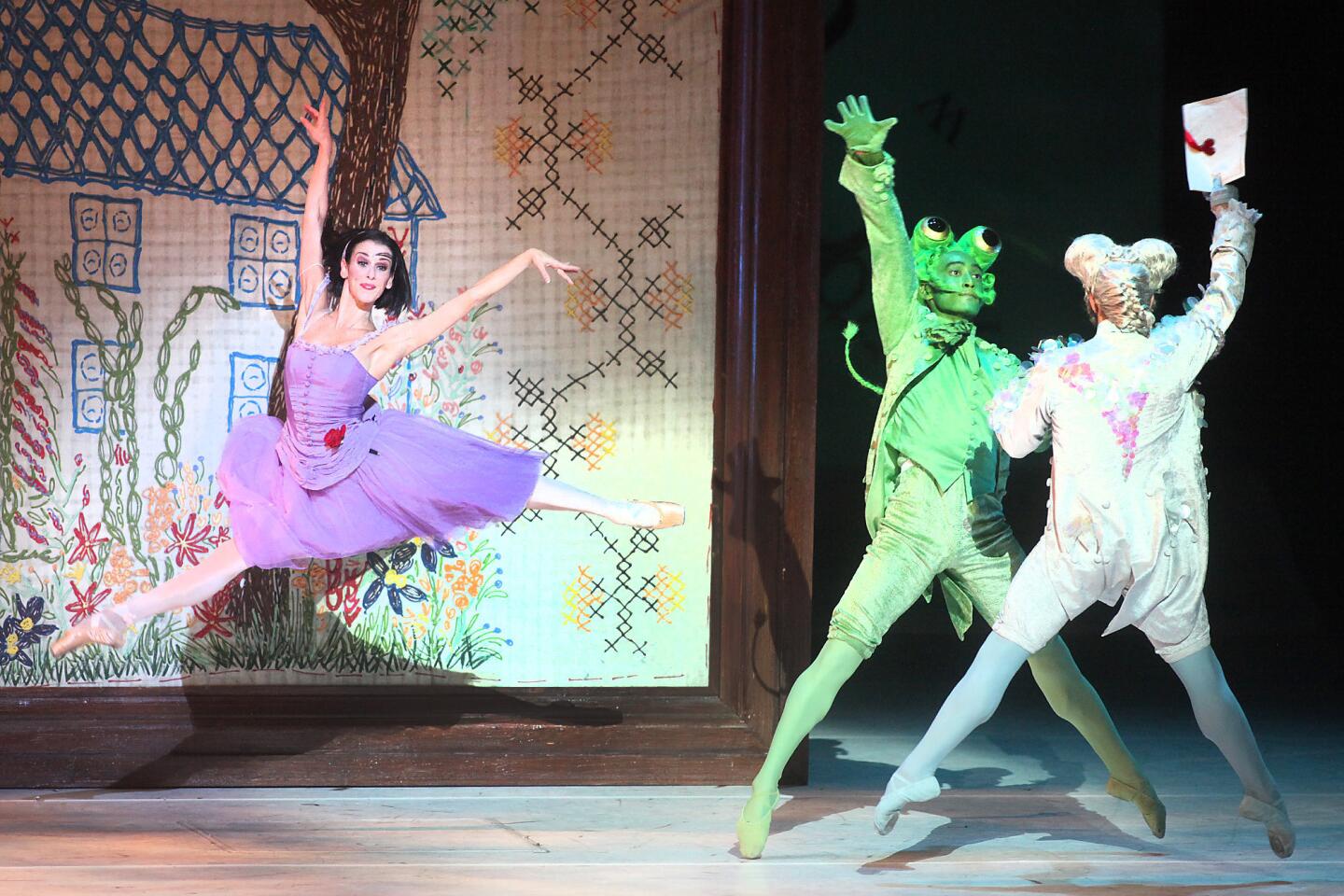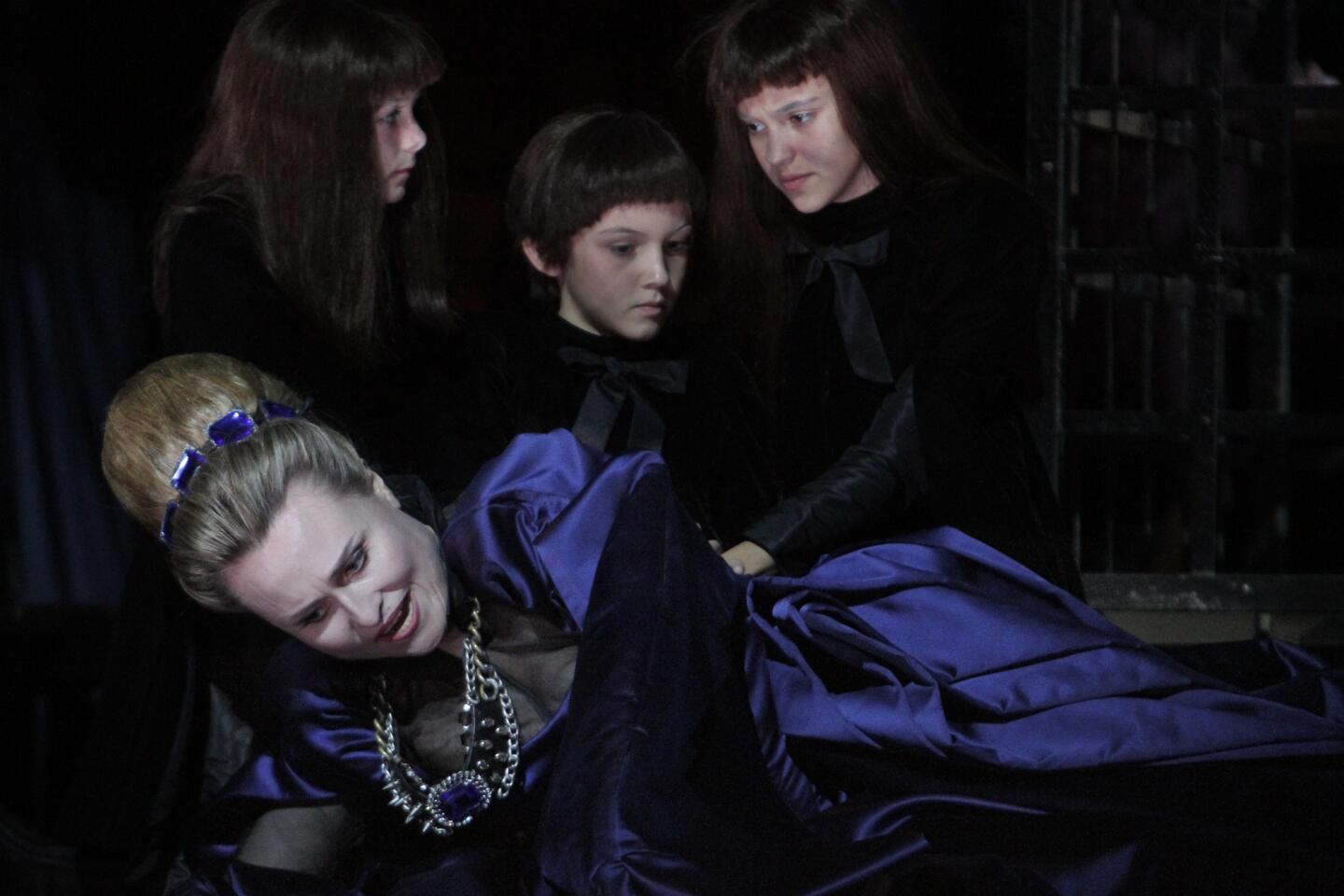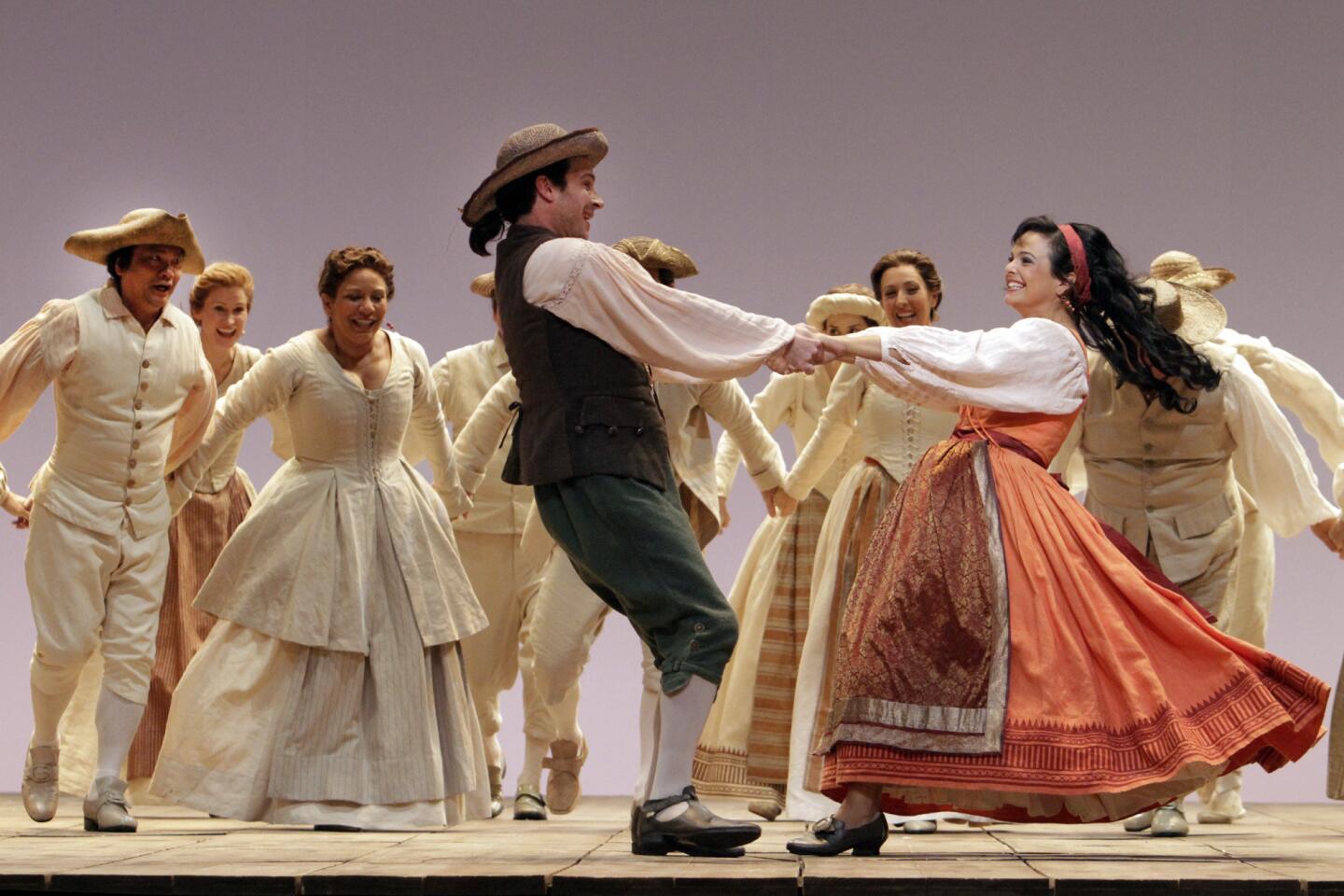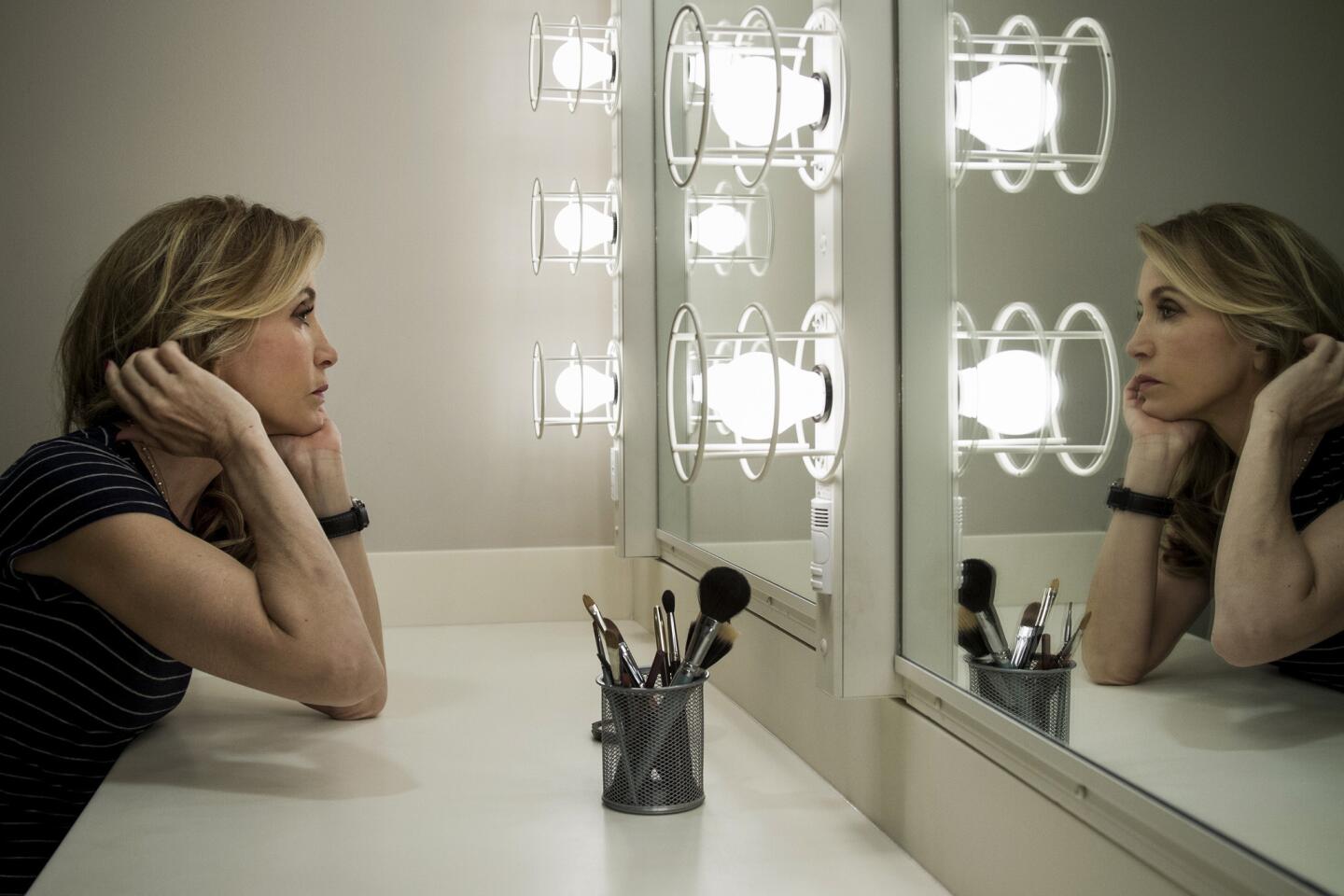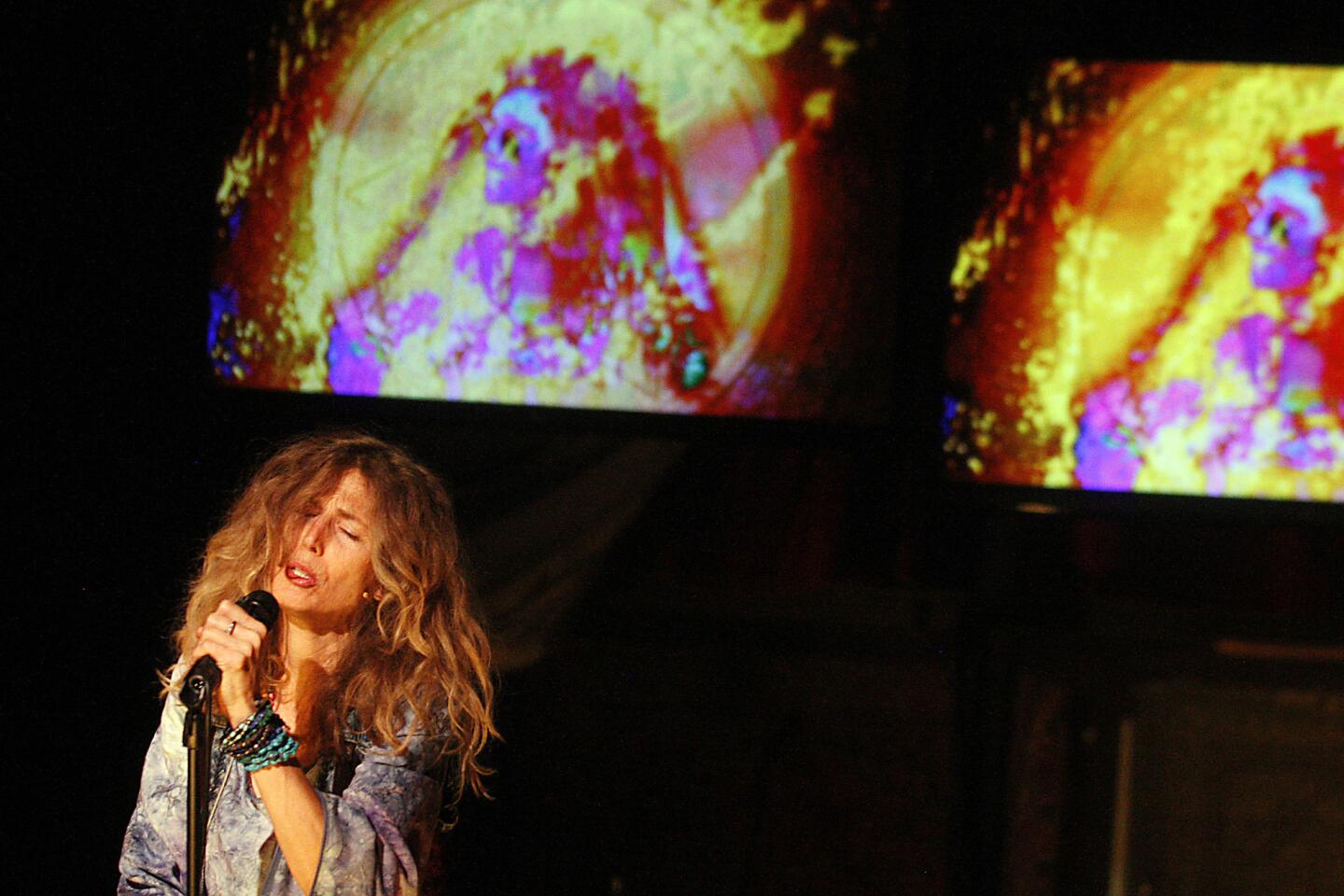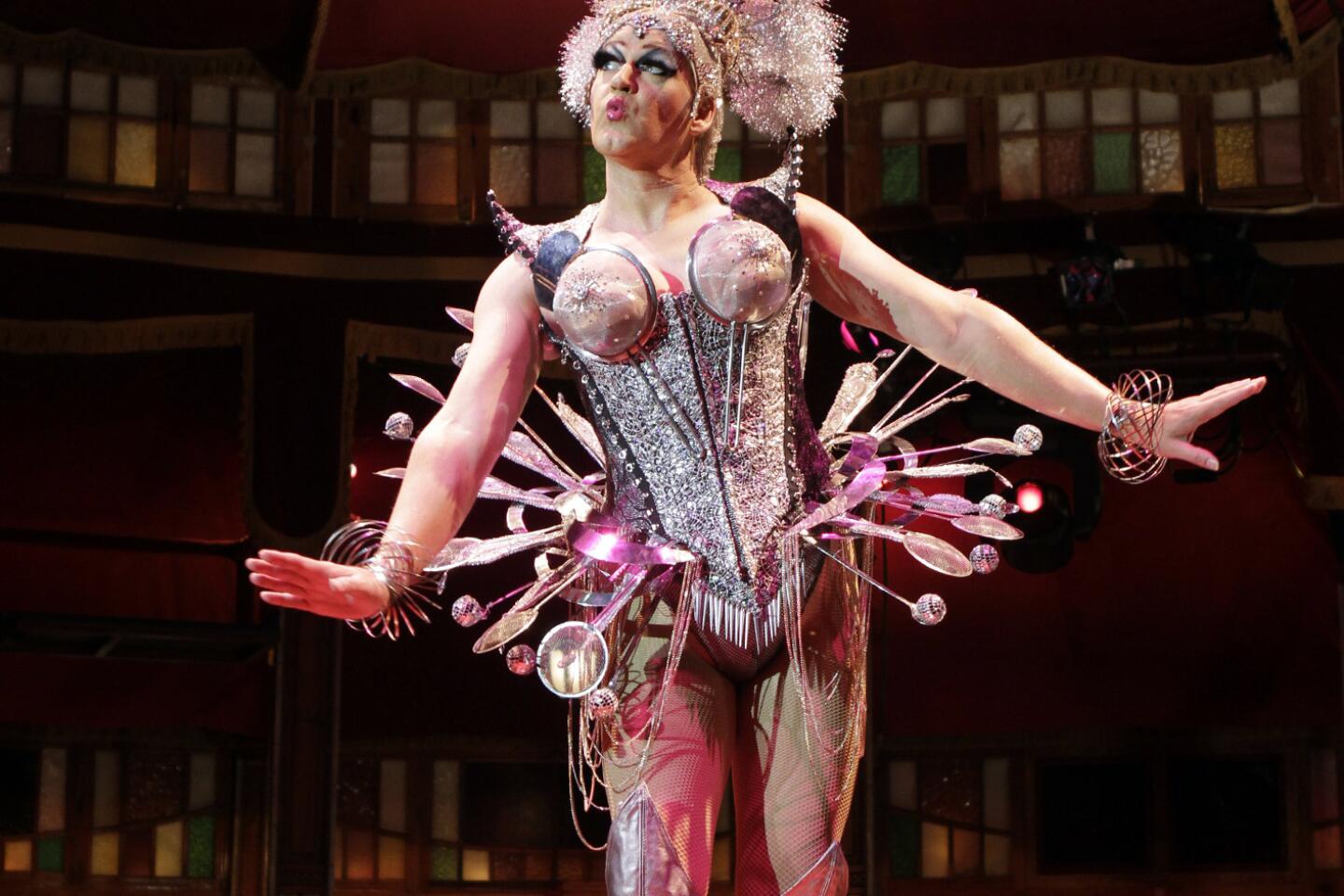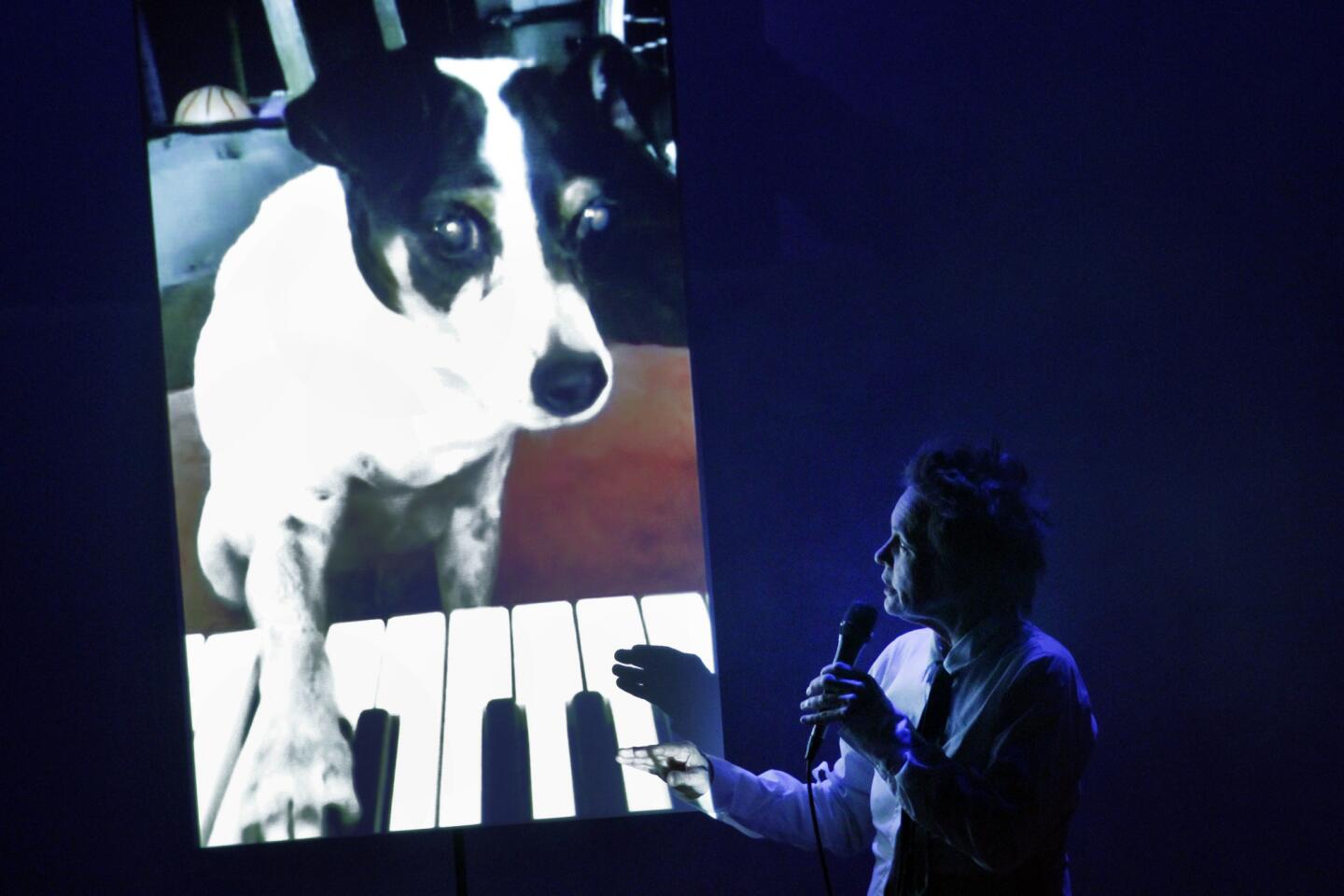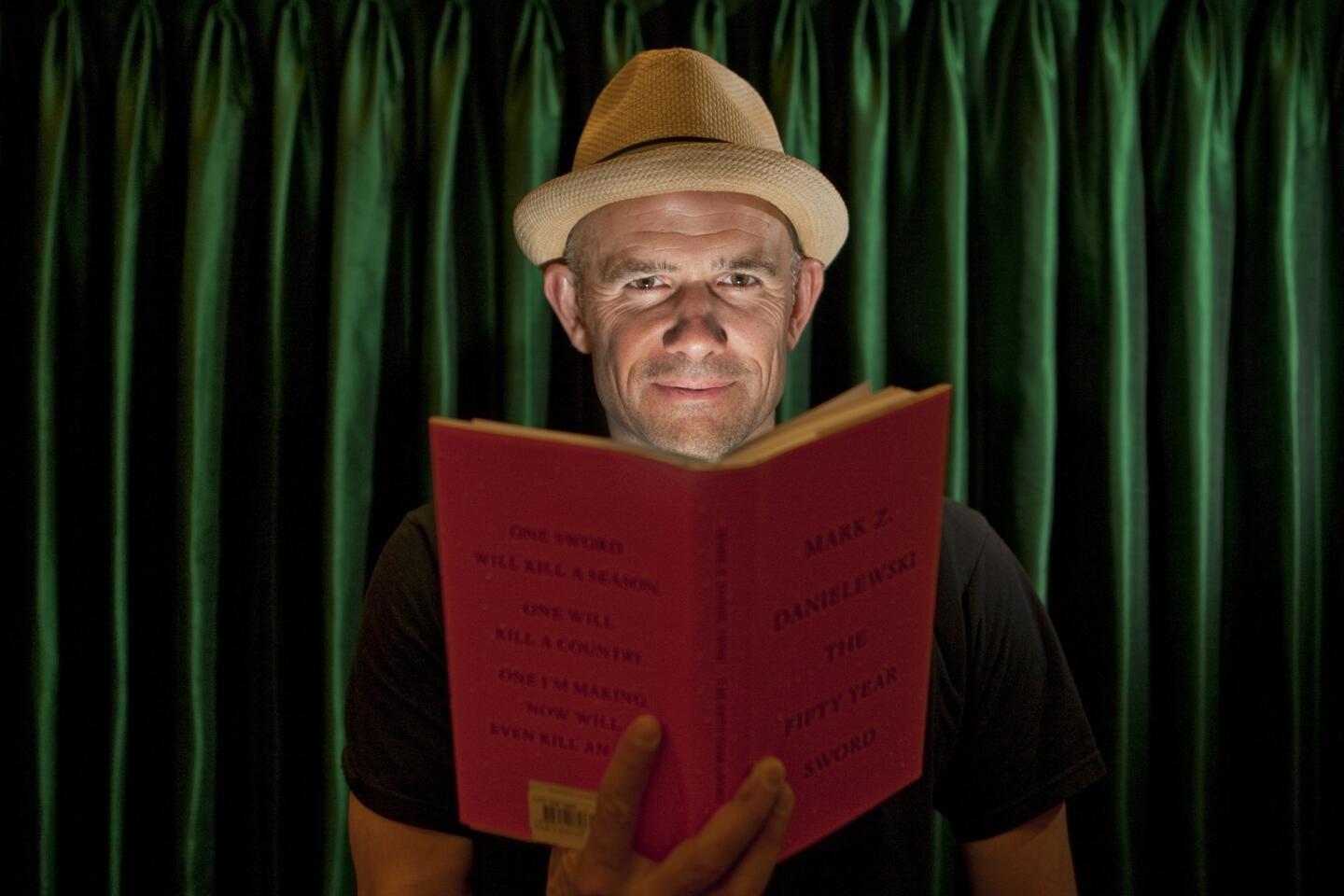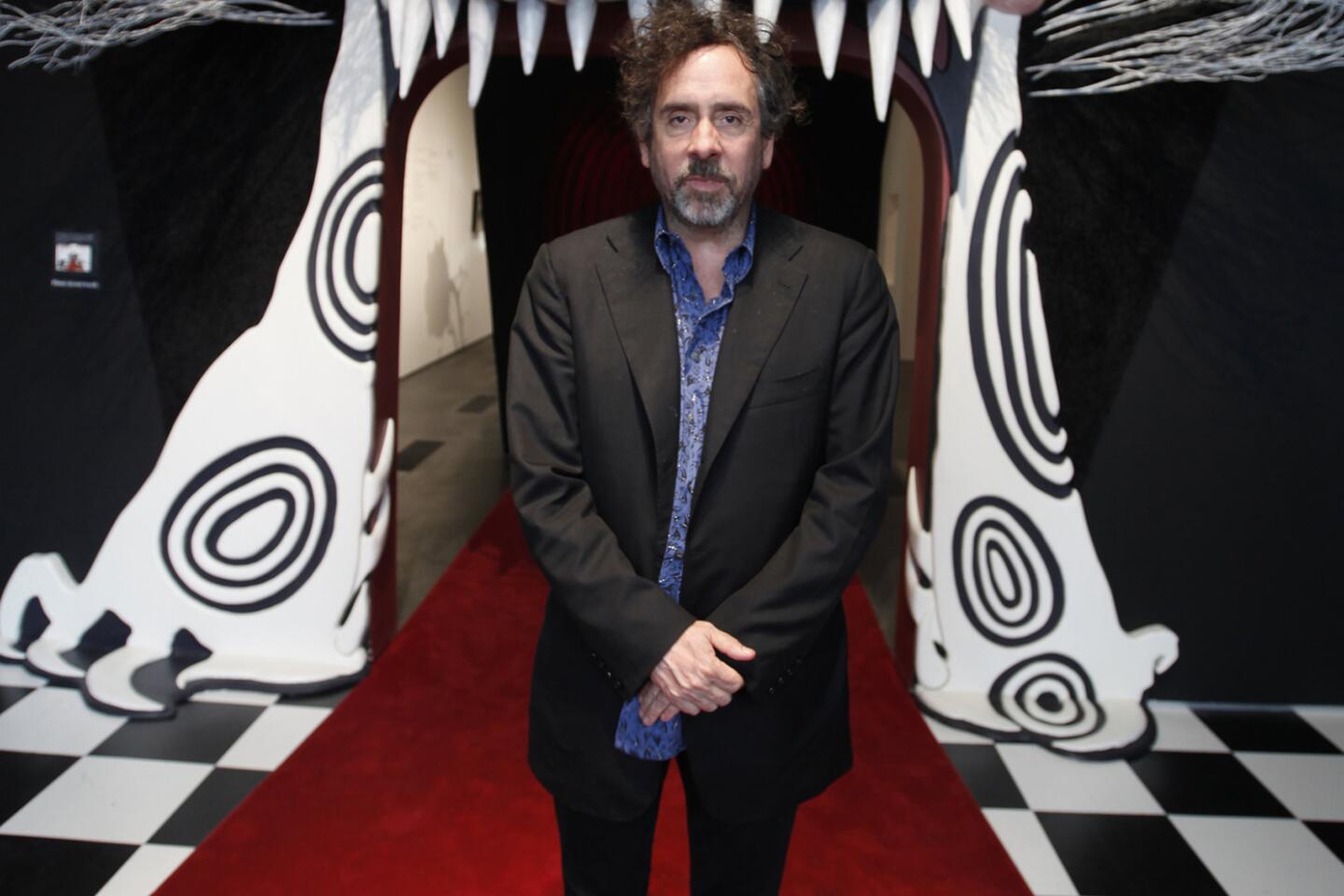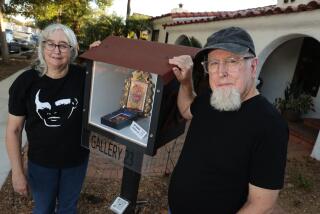For Gary Baseman, ‘The Door’ is wide open and ready for more
- Share via
Artist Gary Baseman has arrived at the Skirball Cultural Center with a brightly colored throw pillow under his arm and a determined look on his face.
After greeting security guards and the few visitors browsing his sprawling retrospective exhibition “The Door Is Always Open,” Baseman placed the pillow on a sofa in one of the galleries. He took several snapshots and kept adjusting the pillow until it looked just right to him.
The pillow was no ordinary decorative item. It was a loud blue with a menacing message spelled out in flowery lettering: “Play with me or else.”
FULL COVERAGE: 2013 Spring arts preview
Is that a threat? Or just a dark joke? Like much of Baseman’s pop-surrealist art, it can be interpreted different ways: humorous and threatening, bizarre and comforting, a cushion to be cuddled or used to suffocate.
Baseman’s fantasy worlds are populated by demonic clowns, cute monsters and psychedelic dolls pulled from his childhood subconscious. His work contains elements of Marc Chagall, Walt Disney and Takashi Murakami.
Even though the retrospective had already opened with more than 400 items, Baseman is still adding material. In his cluttered, constantly churning state of mind, no work is completely finished until it is pulled from his hands, usually by force of deadline.
Luckily for Baseman, the security guards at the Skirball haven’t stopped him from tinkering with his own show.
The exhibition, running through Aug. 18, is modeled upon the four-plex building in Los Angeles’ Fairfax district where Baseman grew up.
“I didn’t want to create a typical gallery space,” the artist explained. He said that rummaging through the clutter of his late parents’ home — his father died in 2010 and his mother in October — gave him the idea of making his family life public.
The exhibition has vintage family furniture that visitors can touch and sit on: a dining table prepared for a seder dinner; bright orange arm chairs and a living room couch so lived-in, its cushions threaten to swallow people who sit on it.
PHOTOS: Arts and culture in pictures by The Times
The show’s eclectic and somewhat manic nature reflects the multiple facets of the Baseman career arc. Visitors may recognize illustrations he’s done for publications, including covers for Time, the Atlantic and the New Yorker magazines as well as the L.A. Times Calendar section.
He has designed big-eyed toys (his “Toby” doll is the most famous) and the Hasbro board game Cranium.
He was the co-creator of the 2000 Disney animated TV series “Teacher’s Pet,” with Nathan Lane as the voice of a dog who aspires to be a boy. (The Emmy Awards that Baseman won for the show are in the exhibition.)
There’s little that is subtle about Baseman’s art and the same could be said for Baseman himself. Voluble, with an enthusiasm that comes at you like a tidal wave, Baseman is a 52-year-old with an adolescent sense of exuberant mischief.
“I want to disarm people with my art. I want them to feel their own ‘uncomfortableness,’” he said.
If there’s a thread that unifies the retrospective, it’s the primacy of family, specifically the pull of his Jewish roots. There are numerous family photographs — from seders, bar mitzvahs, birthday gatherings.
His parents fled Nazi persecution in Eastern Europe and made L.A. their home after spending several years in Canada. His father was an electrician and his mother worked in the bakery at Canter’s Deli.
The exhibition’s title is a homage to Baseman’s father, who frequently entertained guests at their home.
“That’s what I want to create in this show, the feeling that everyone is welcome to my home,” said the artist.
Chez Baseman
For the last six years, Baseman has lived on the first floor of a duplex on a quiet street near Carthay Circle. It was supposed to be temporary following his divorce several years ago, but it doesn’t look like he’s moving anytime soon, given the amount of clutter throughout the home.
He said his ex-wife got their four-bedroom house in the Mid-Wilshire area in the divorce settlement.
“I was the first person in my family to get divorced,” he said. “It was a dark period for me.”
At Chez Baseman, art and life coexist in a chaotic tangle. The rooms are full of projects in mid-creation, numerous Apple devices and boxes destined for art-storage limbo.
CHEAT SHEET: Spring Arts Preview
Baseman riffled through some of his files and pulled out a 20-year-old illustration. It was the first drawing he submitted to the New Yorker.
“They sent me a letter saying thanks, but no thanks,” he recalled. Eventually, after much persistence and many submissions, they said yes — Baseman’s first cover for the magazine was in 2002.
He sorted through old illustrations, many of which he made while living in Brooklyn from 1986 to 1996. After a pause, he said, “I no longer cringe when I look at my old work.”
In the kitchen, an obese cat named Blackie that Baseman adopted sat on a stack of boxes. On the counter nearby was a new project — a prototype bottle for a limited edition of 1800 Tequila that Baseman is working on for Jose Cuervo, featuring some of the artist’s clown-like monsters and gremlins.
At the kitchen table Denise Gray, his studio manager, was writing emails. She had the gently patient demeanor of someone who has learned how to work with a messy artist.
“Gary’s abundant with ideas, but I’m not sure he always knows what it takes to make them happen,” she said.
Every room in the house is an art studio in some respect. The shelves are filled with personal artifacts from his days at Fairfax High School, some brought from his parent’s house after his mother’s death.
Baseman said working with the Skirball on the exhibition was a sometimes contentious experience, in part because he wanted to include so many personal items in the show. Some features, including a kitchen area, were cut.
“Gary wanted to include all of the lamps from his living room — but we were so nervous if anything accidentally happened, even a minor earthquake,” said Thomas Schirtz, head of exhibition design and production at the Skirball, in a separate interview. “So we chose one lamp and put it in a corner. But Gary would still try to sneak things over.”
Baseman said there was also intense discussion over some of the adult content of his art: nudity, sexuality and disturbing fantasy images.
“The Skirball decided that they wanted the show to be family friendly,” he said.
Doris Berger, one of the curators of the retrospective, said that the curatorial team considered some of Baseman’s more sexually graphic works, but opted for “pieces with the same character that were not as explicit.”
She said her team had “constant meetings [with Gary]. Some things made sense. Others we convinced him not to do. Gary is someone who never really stops.”
Family memories
Baseman stepped into the ground-floor apartment of the four-plex where he grew up and switched on the lights. It was strewn with overturned furniture, artwork and photo albums. He has been trying to clear out the building so that he and his siblings can sell it.
But parting with family possessions has been difficult. Some things — the extra-wide curtains in the den, for example — he wants to keep and use for future art projects.
Baseman and his family moved into the building when he was 5 years old. They had previously lived in a building nearby on Curson Avenue and before that in a Boyle Heights apartment.
“I’ve lived in every room in this apartment,” said Baseman. As the youngest of three children, he switched bedrooms often when his older siblings grew up and left home.
His uncle and aunt lived in the unit above his parents. The other apartments in the four-plex — located on a calm stretch of Detroit Street, near 3rd Street — were occupied by relatives and renters.
On the wall of the living room is a portrait of his parents that Baseman said he doesn’t like. “It makes them look like they’re from Iowa,” he said.
In the hallway, a rotary phone was still mounted on the wall with the old exchange Webster 5972 printed on it. Baseman picked up the receiver; it still had a dial tone.
“These phones were built to last. The one I have today…” — he took his smartphone from his pocket — “it’s already broken after just a few months.”
Baseman helped care for his elderly mother in this apartment until she died. “The only thing she wanted was wonton soup from the local Chinese restaurant,” he recalled.
Surveying the apartment, Baseman said he wants to use the space for a big art project before the property is sold.
“I want to get a lot of people in here and paint the walls,” he said. “I haven’t thought it out completely but I want it to be a guerrilla exhibition.”
If he has his way, he will also turn portions of the Skirball retrospective into an impromptu project. He said he is cooking up ideas for performance art in the galleries, even though the Skirball hasn’t yet given the official OK.
“I want it to be a living exhibition,” he said.
More to Read
The biggest entertainment stories
Get our big stories about Hollywood, film, television, music, arts, culture and more right in your inbox as soon as they publish.
You may occasionally receive promotional content from the Los Angeles Times.
